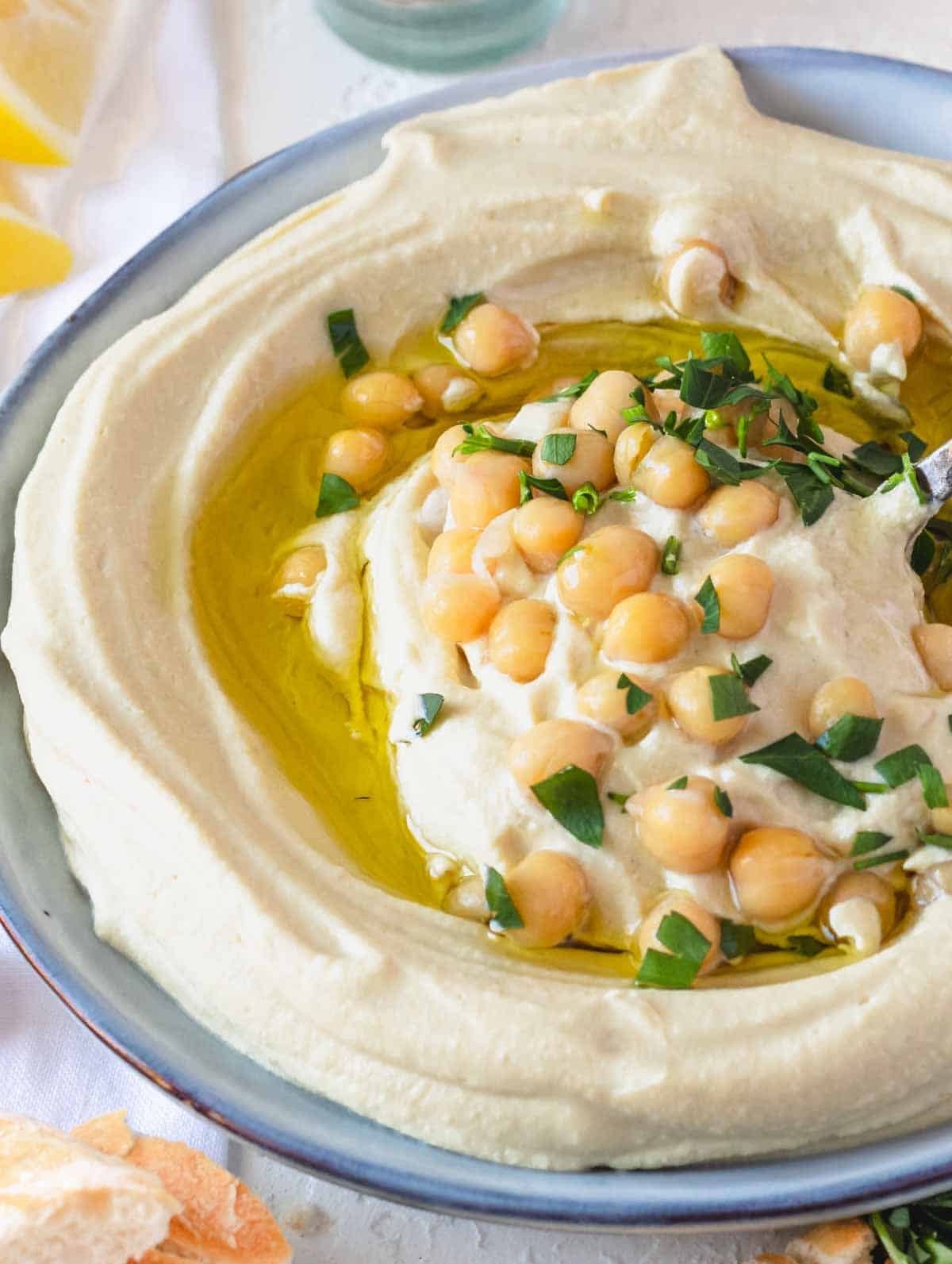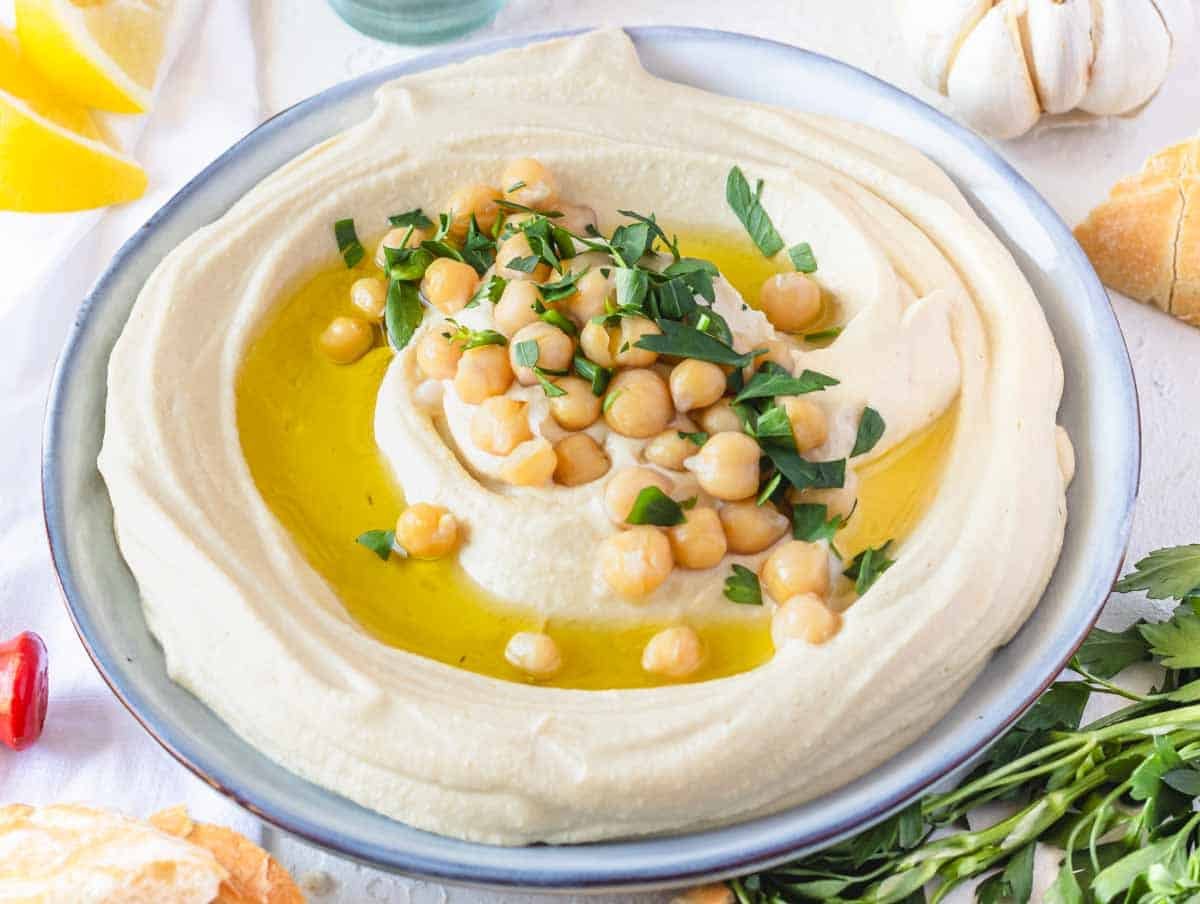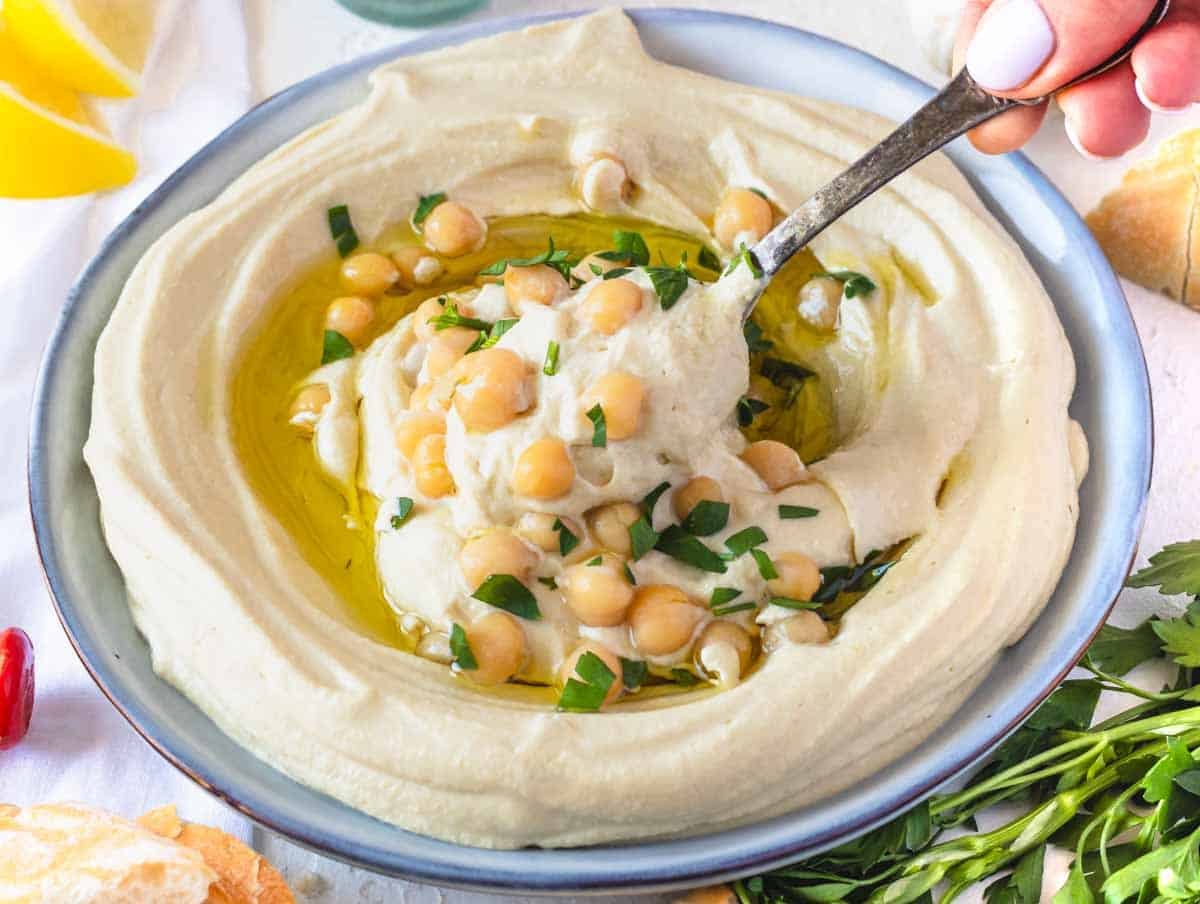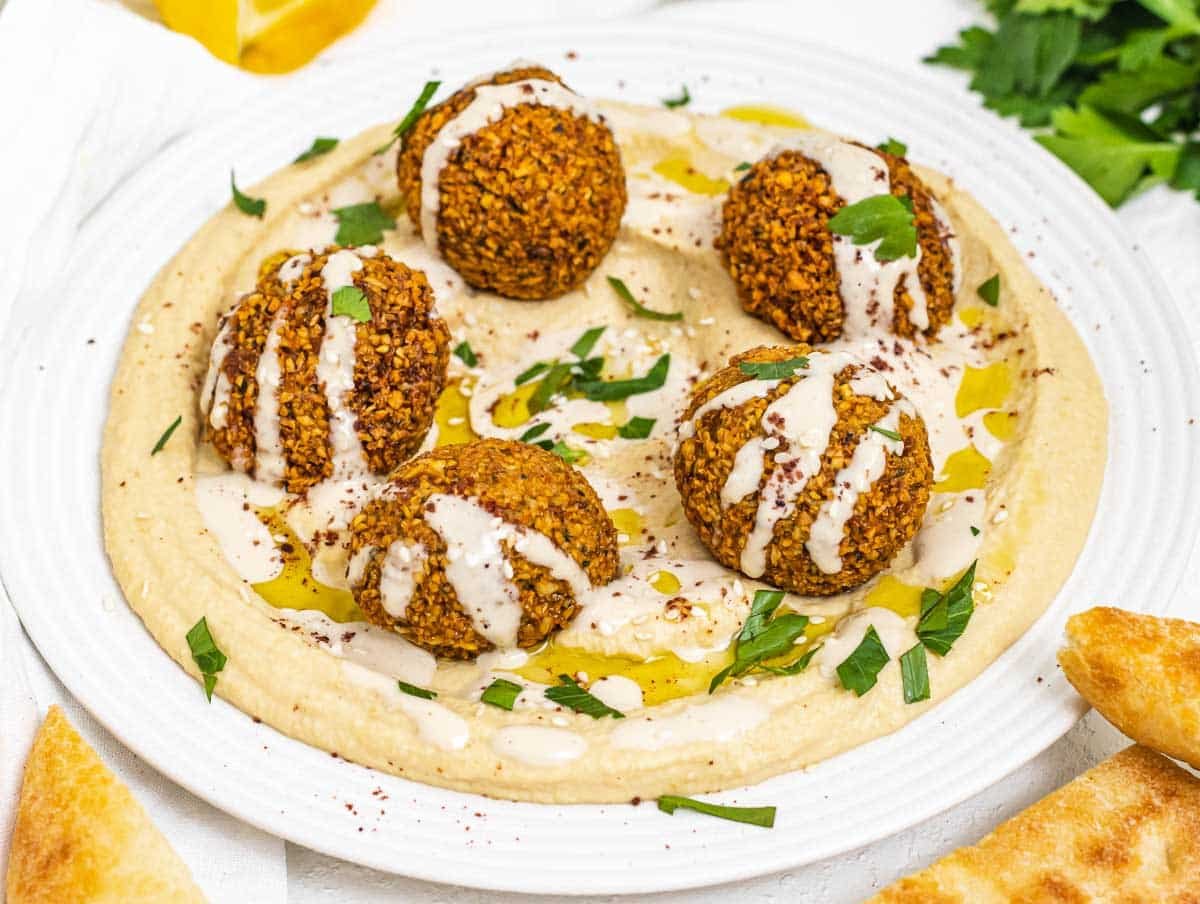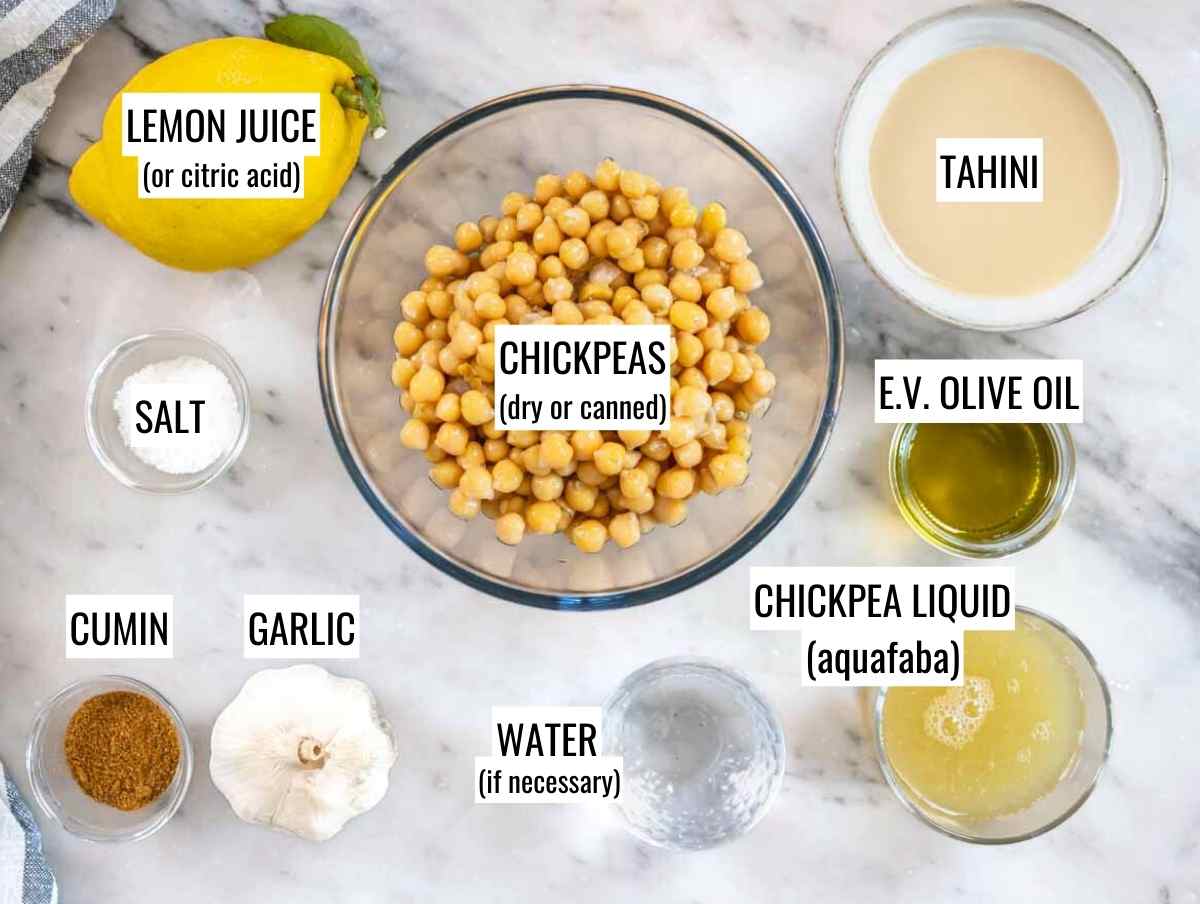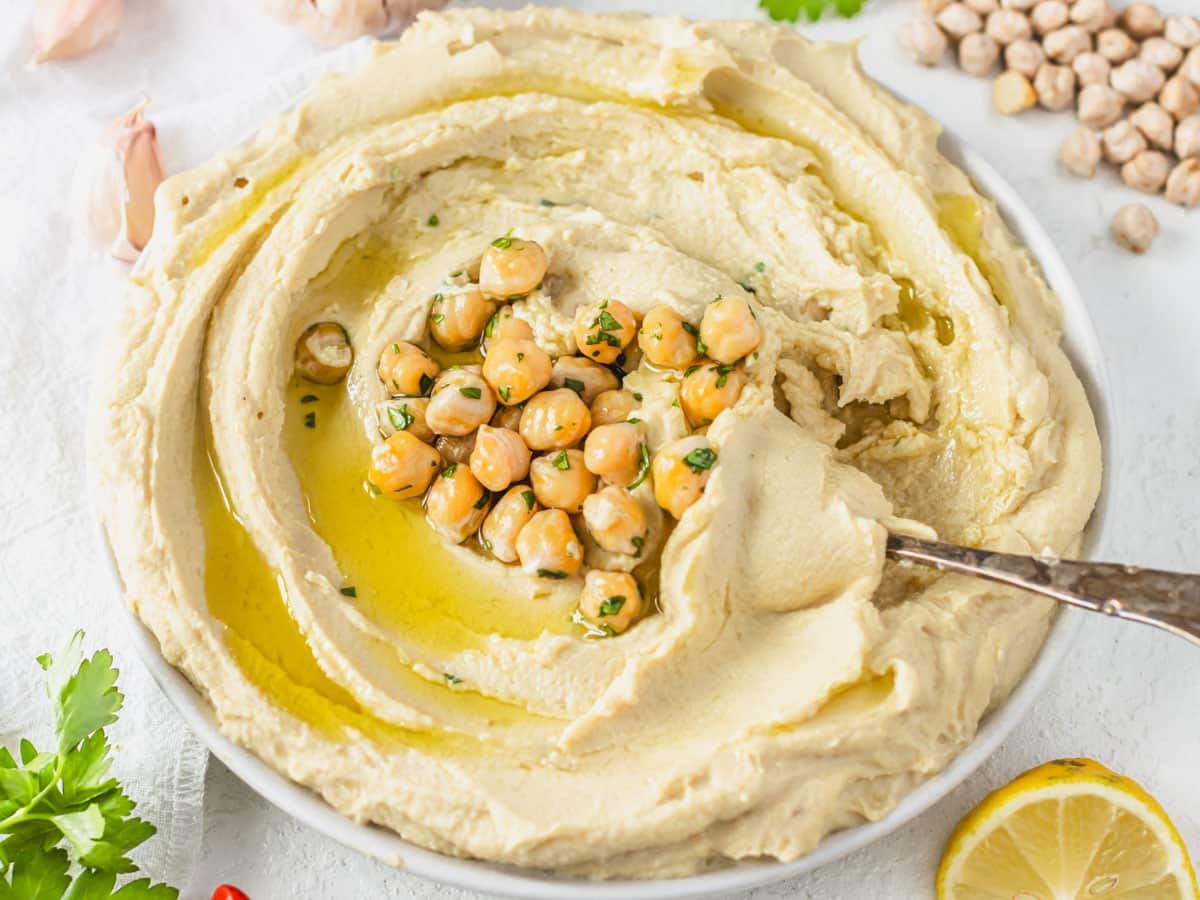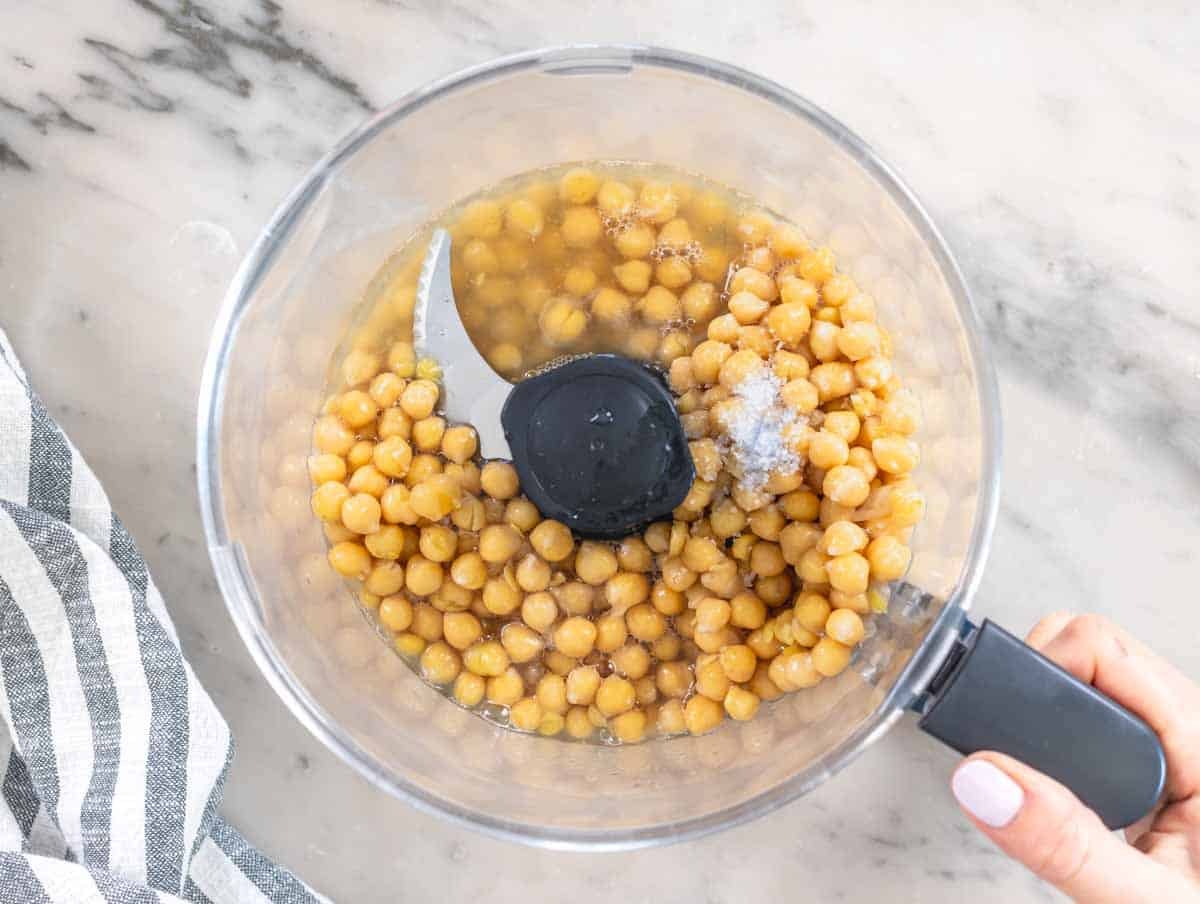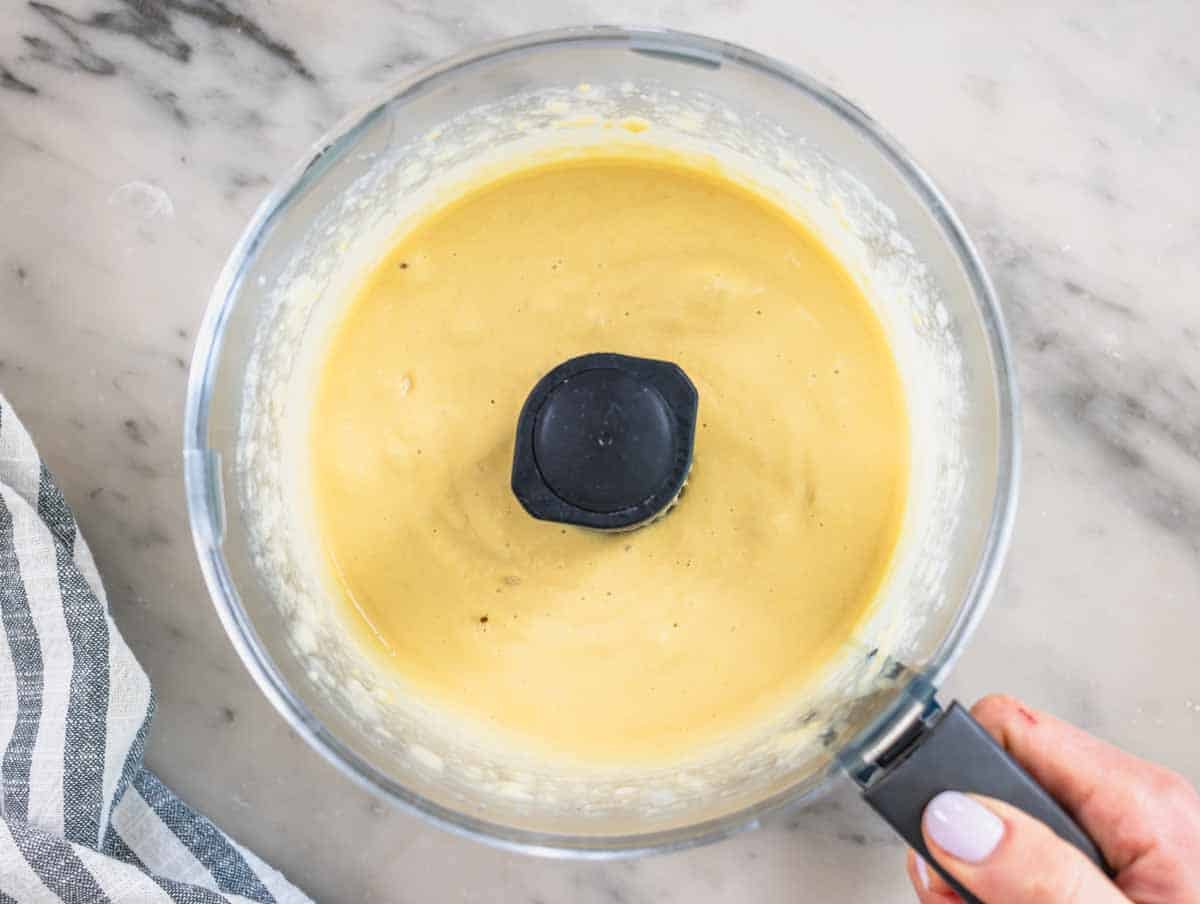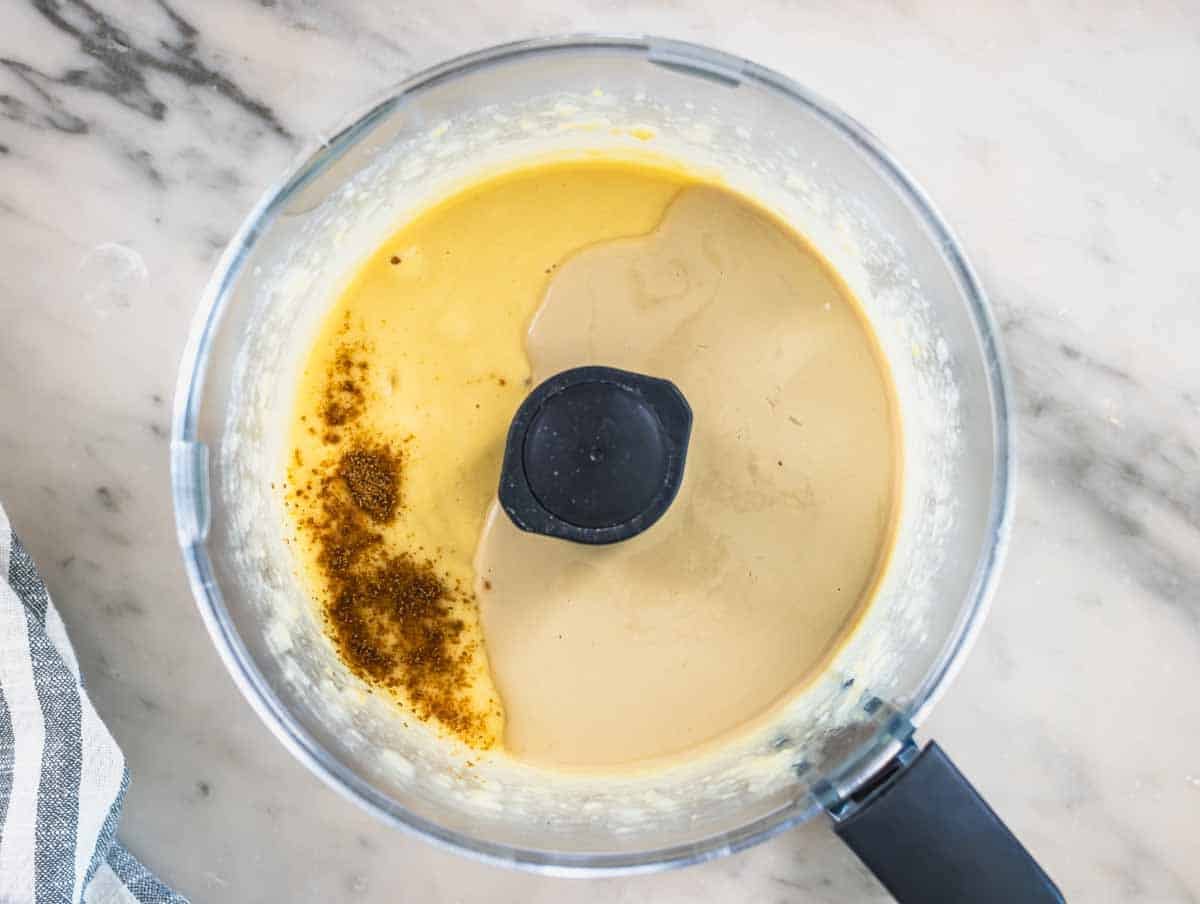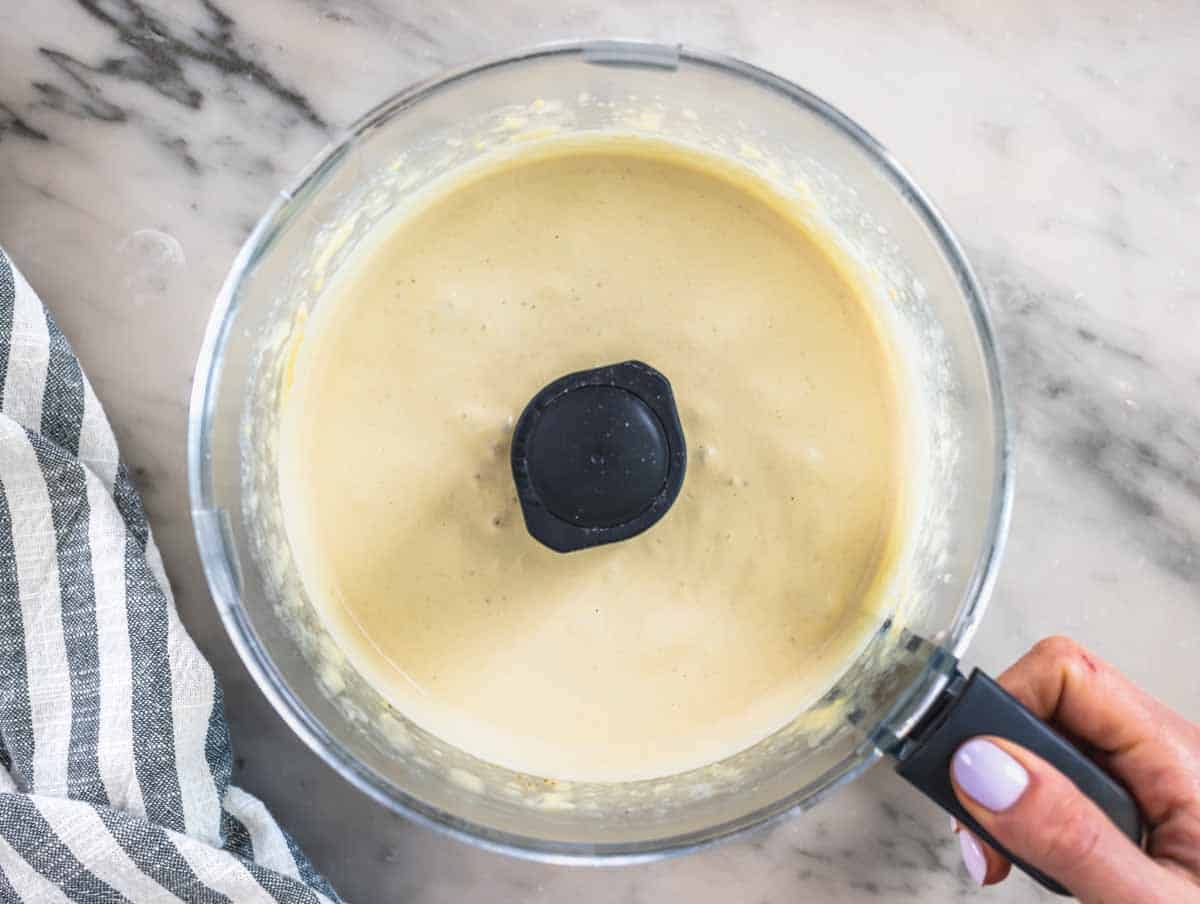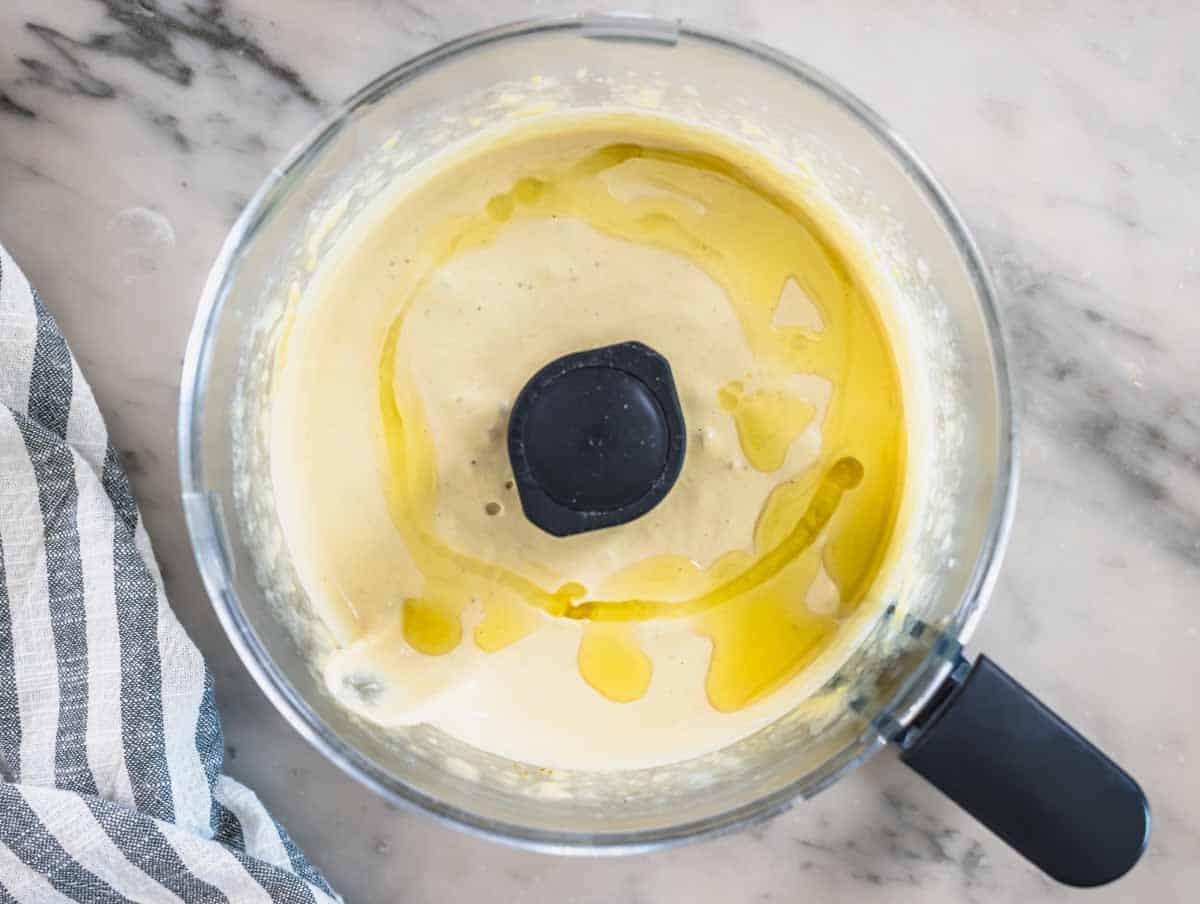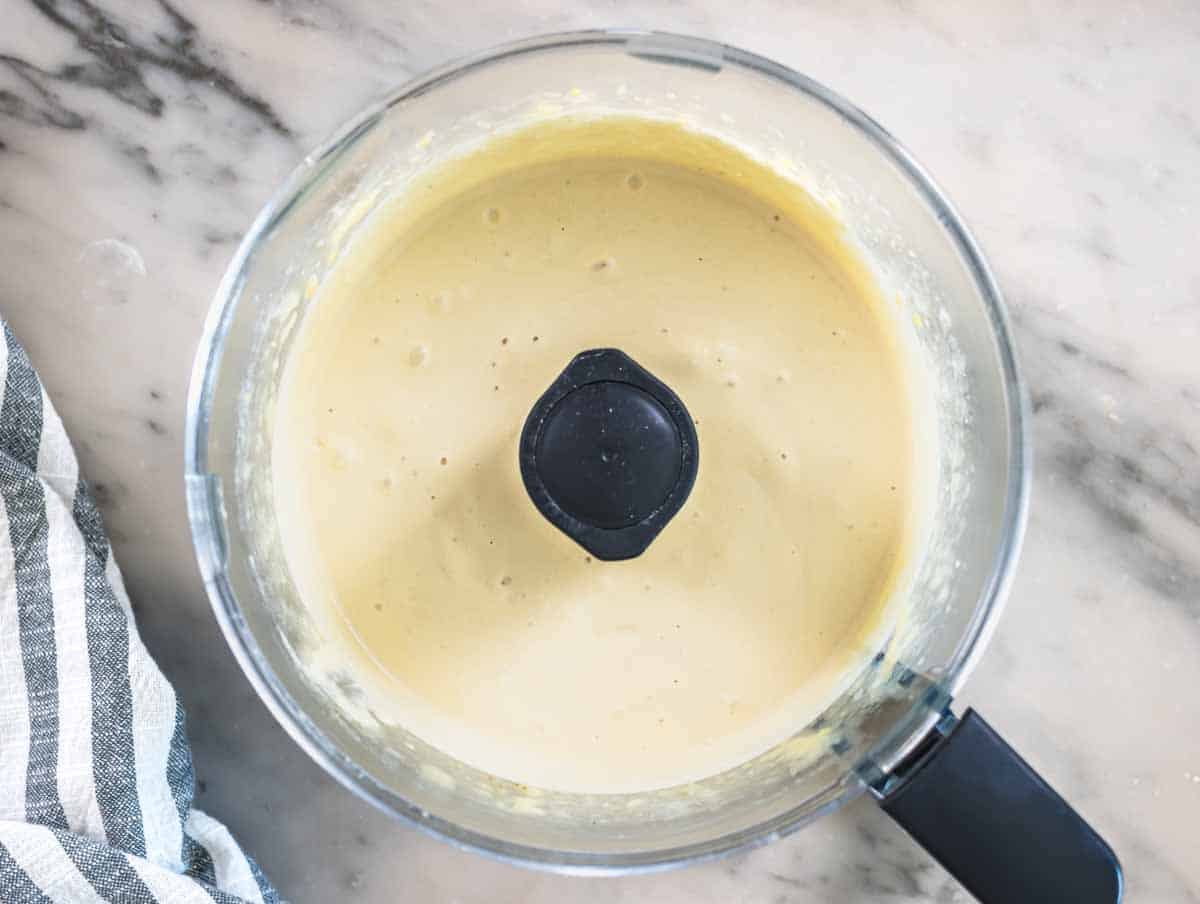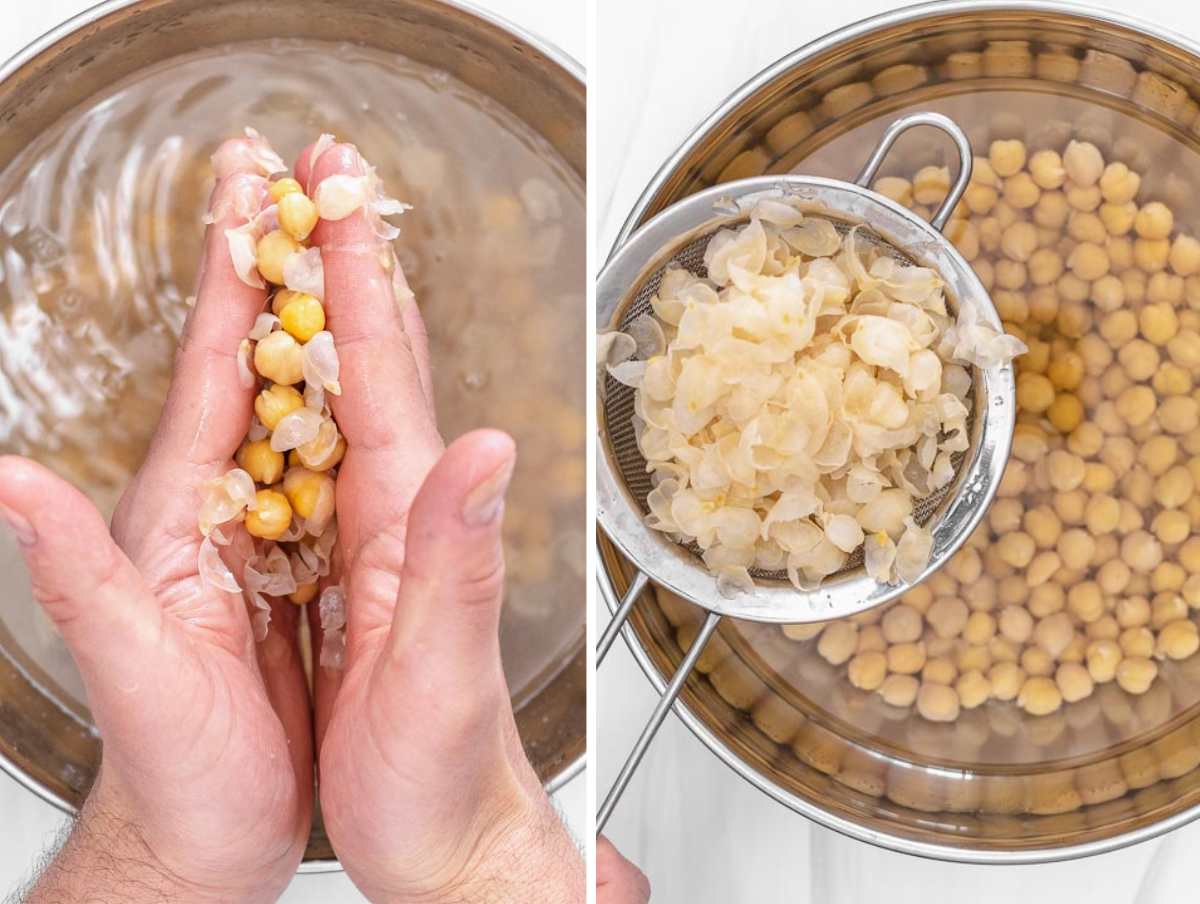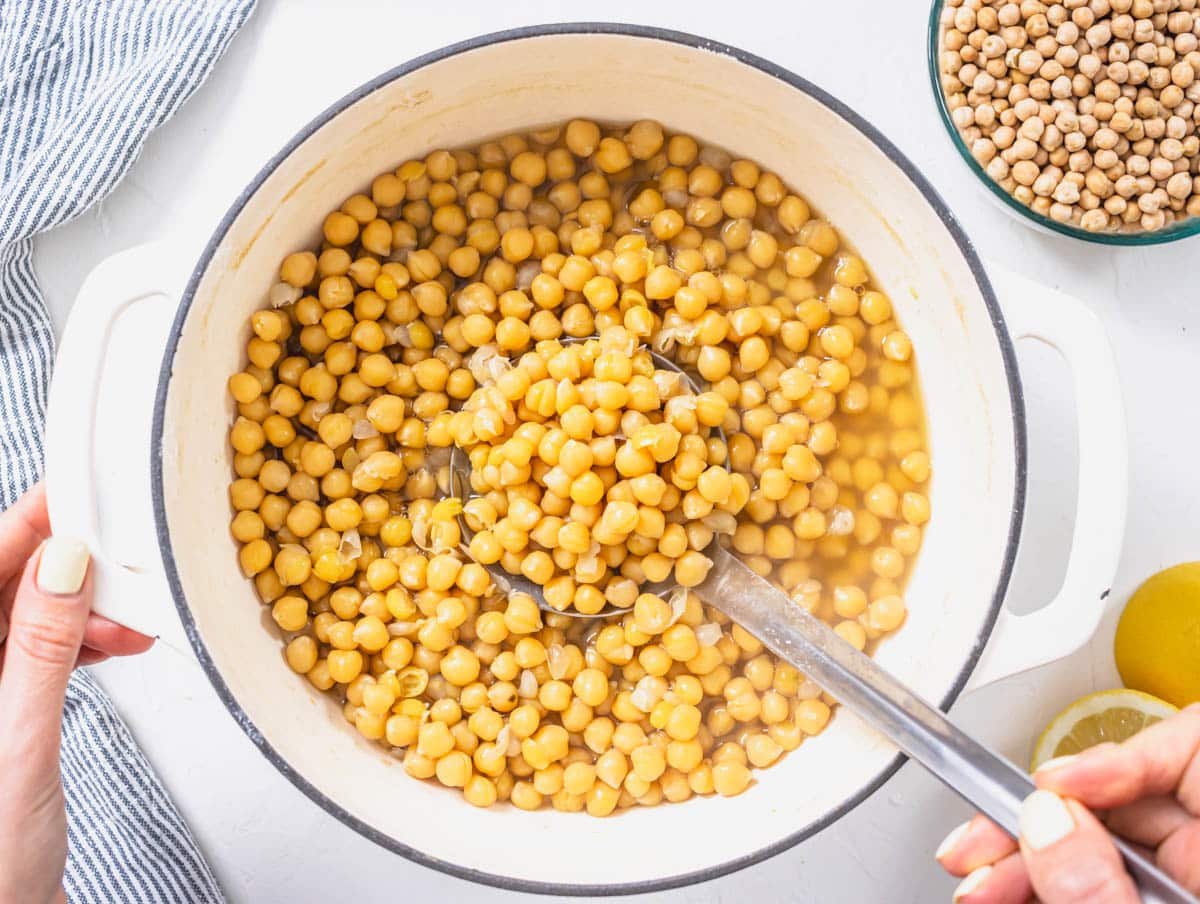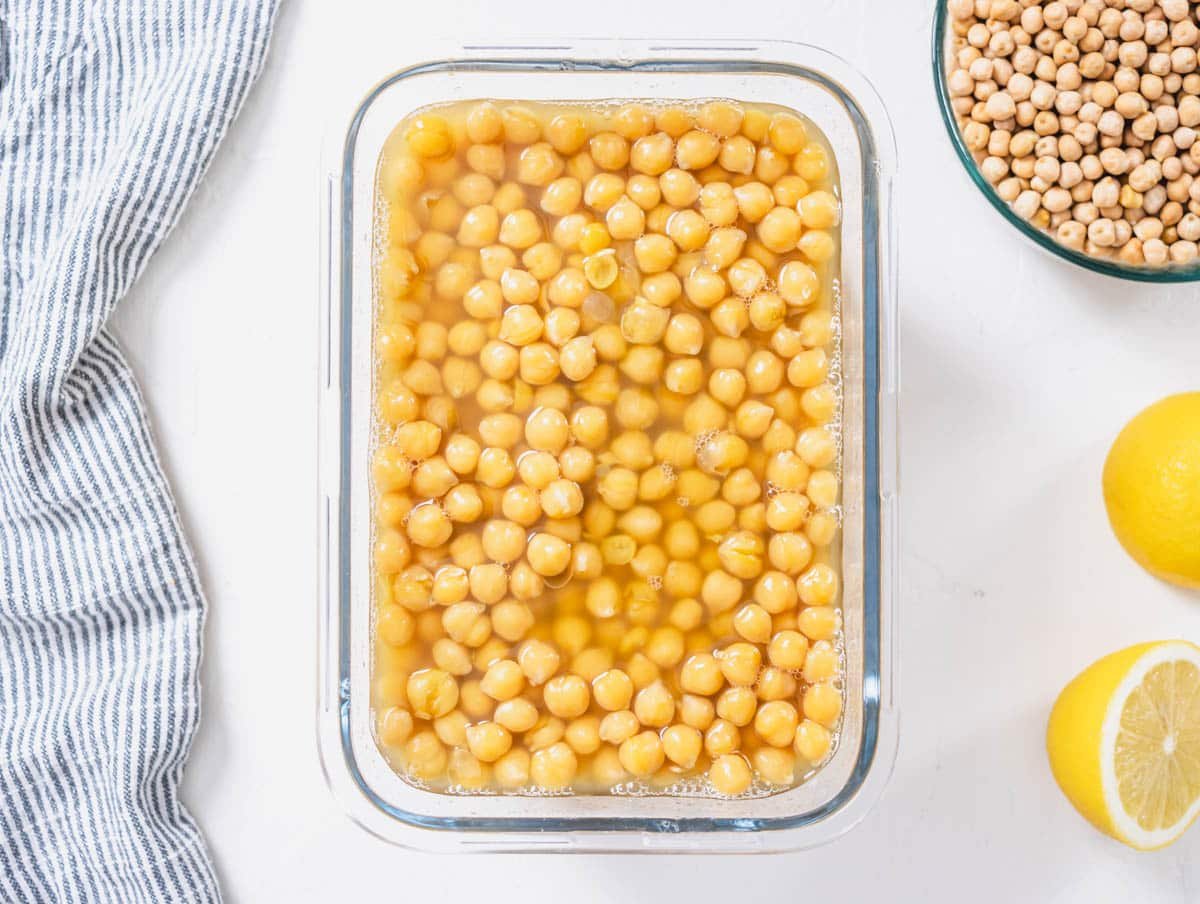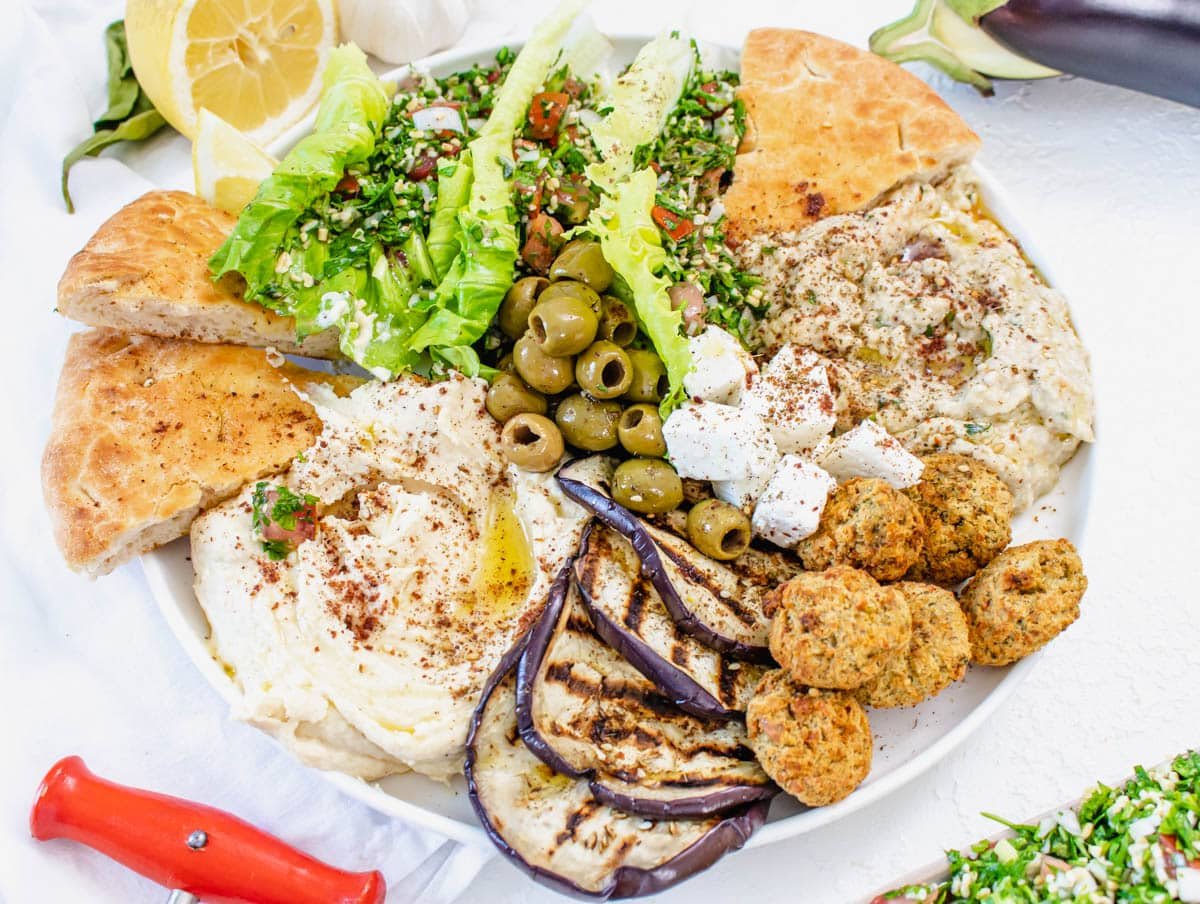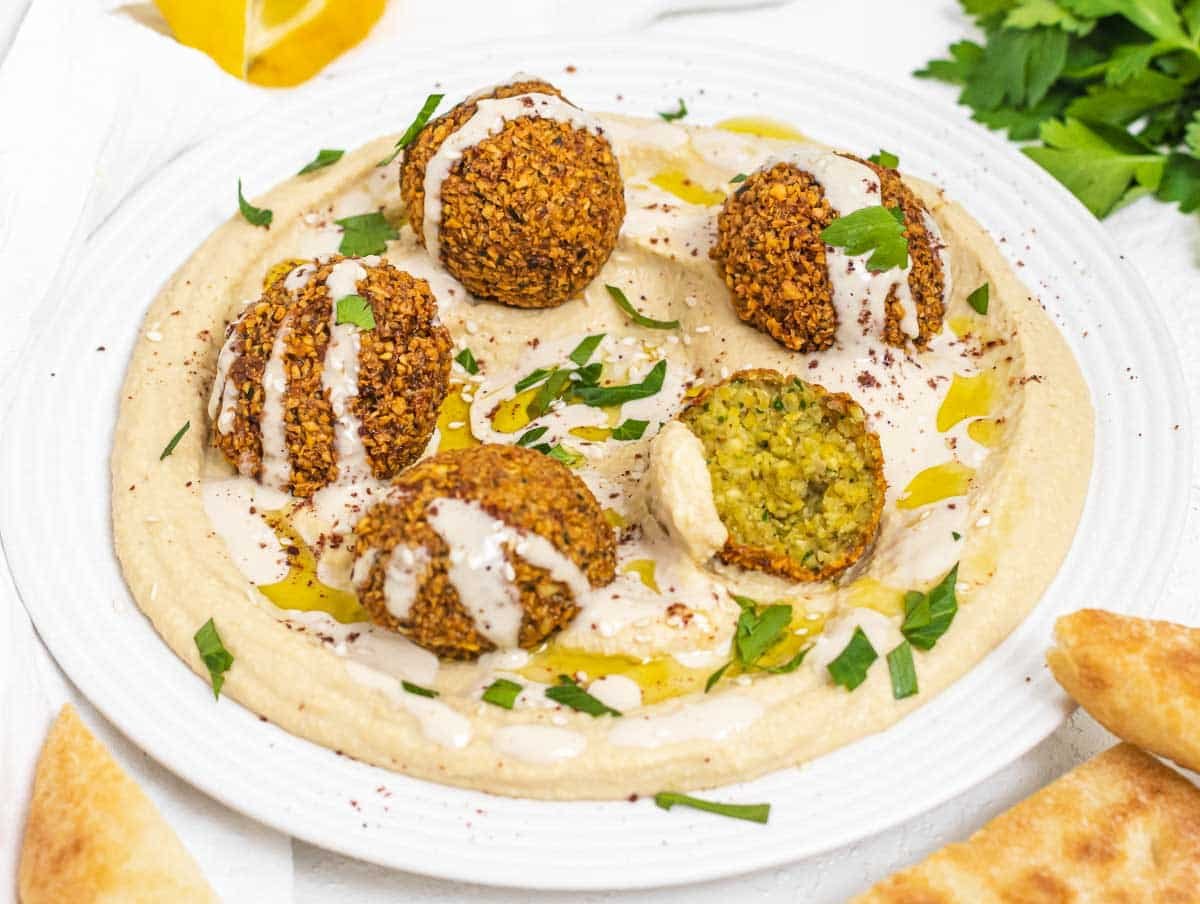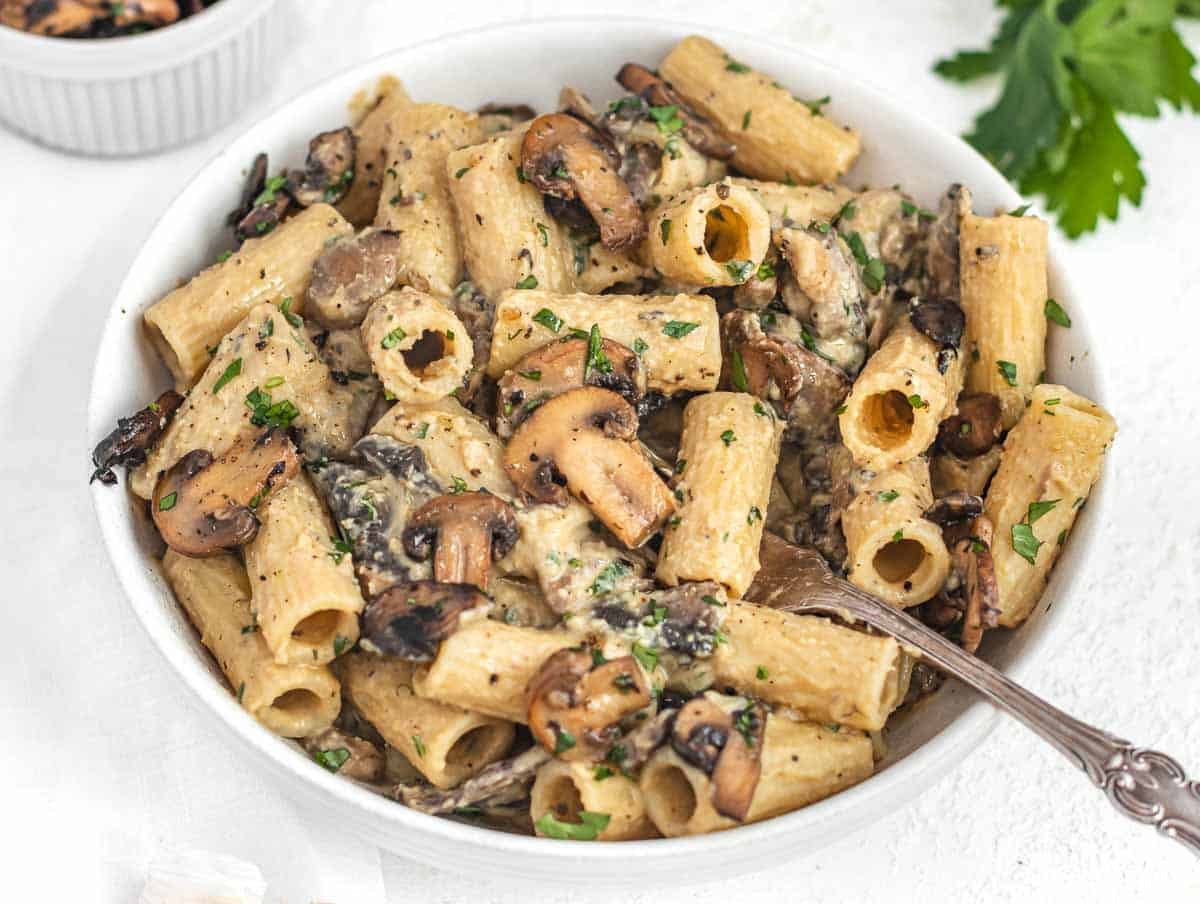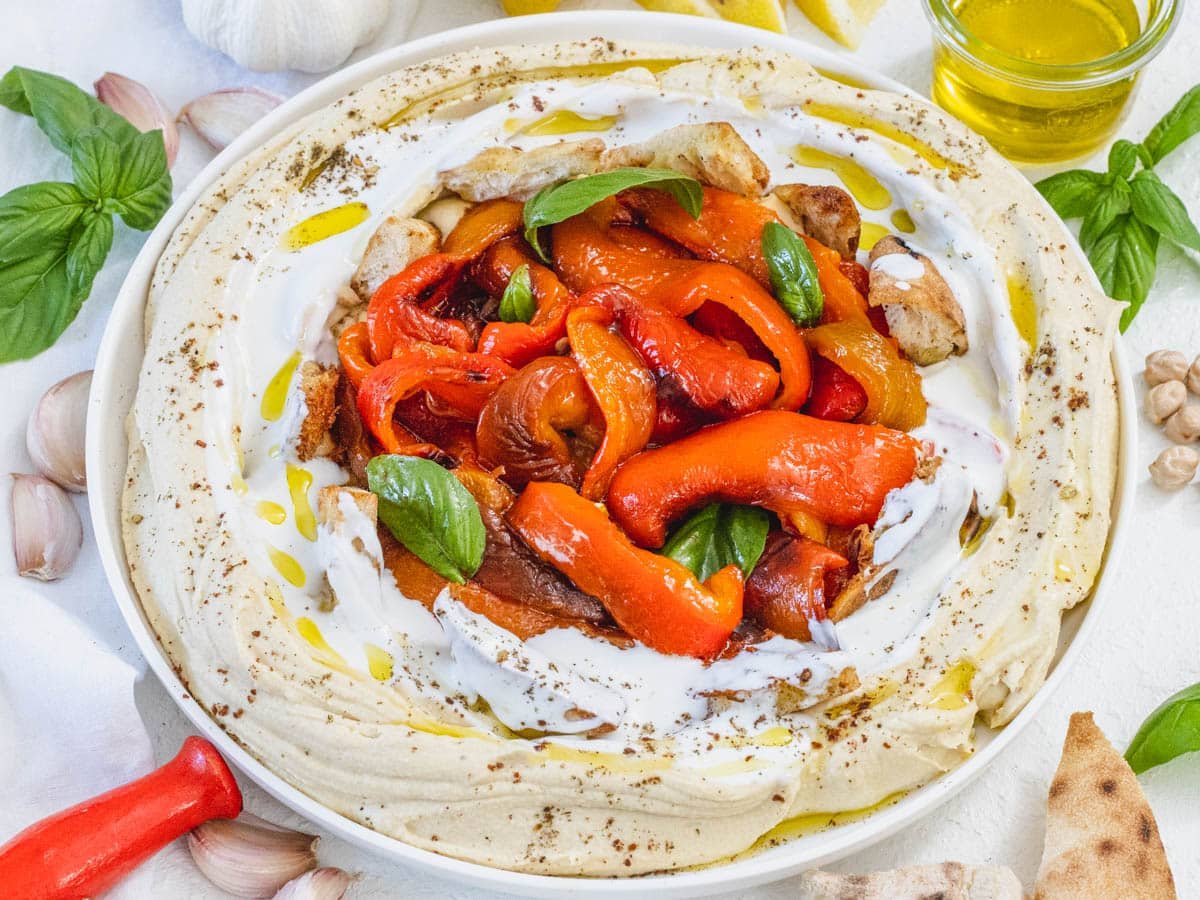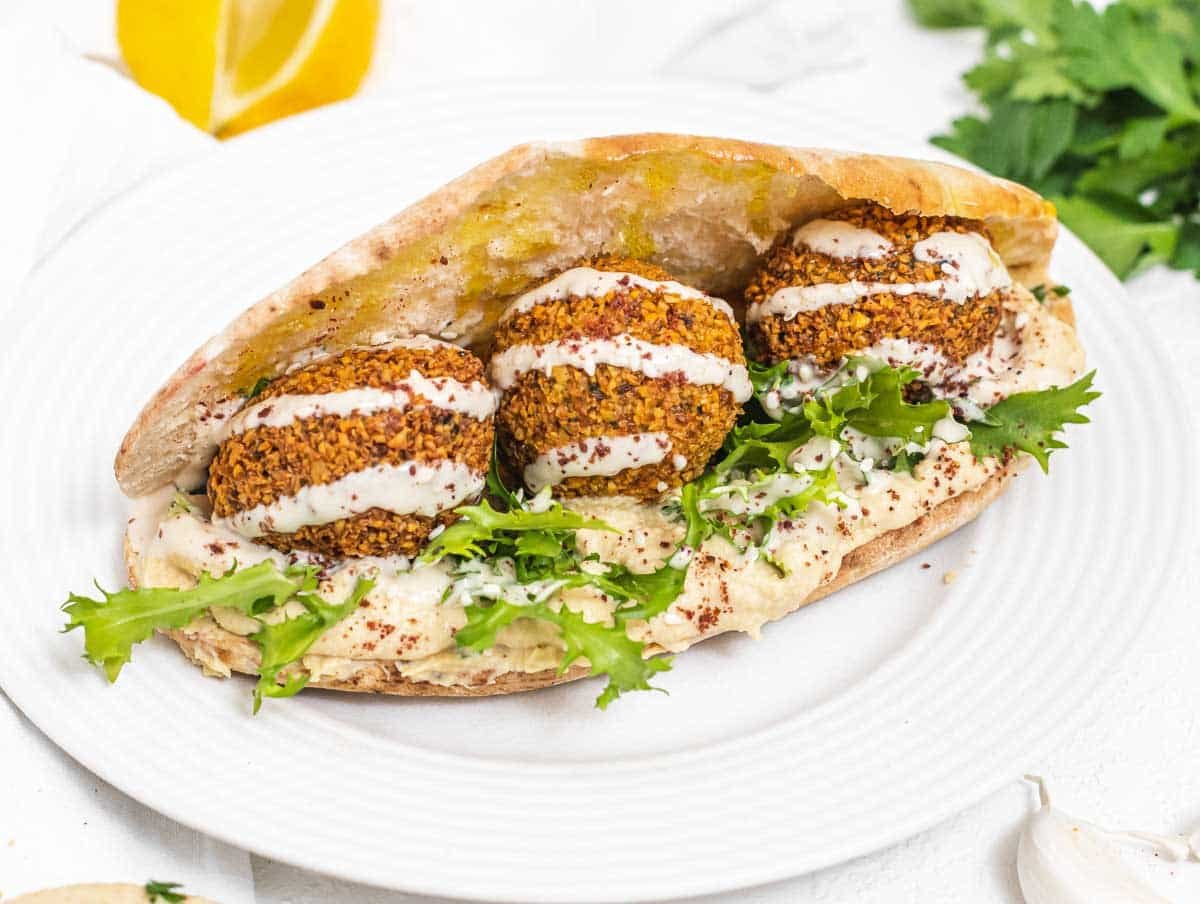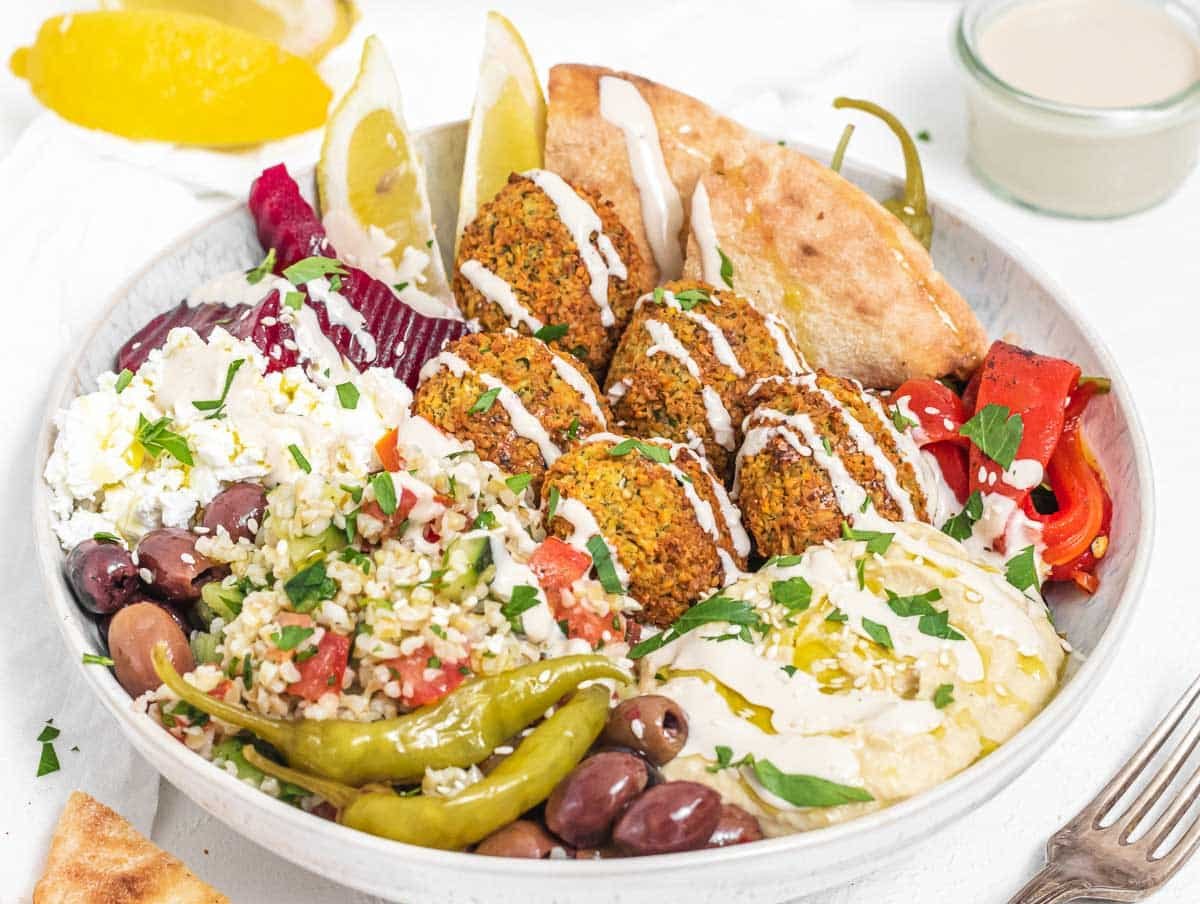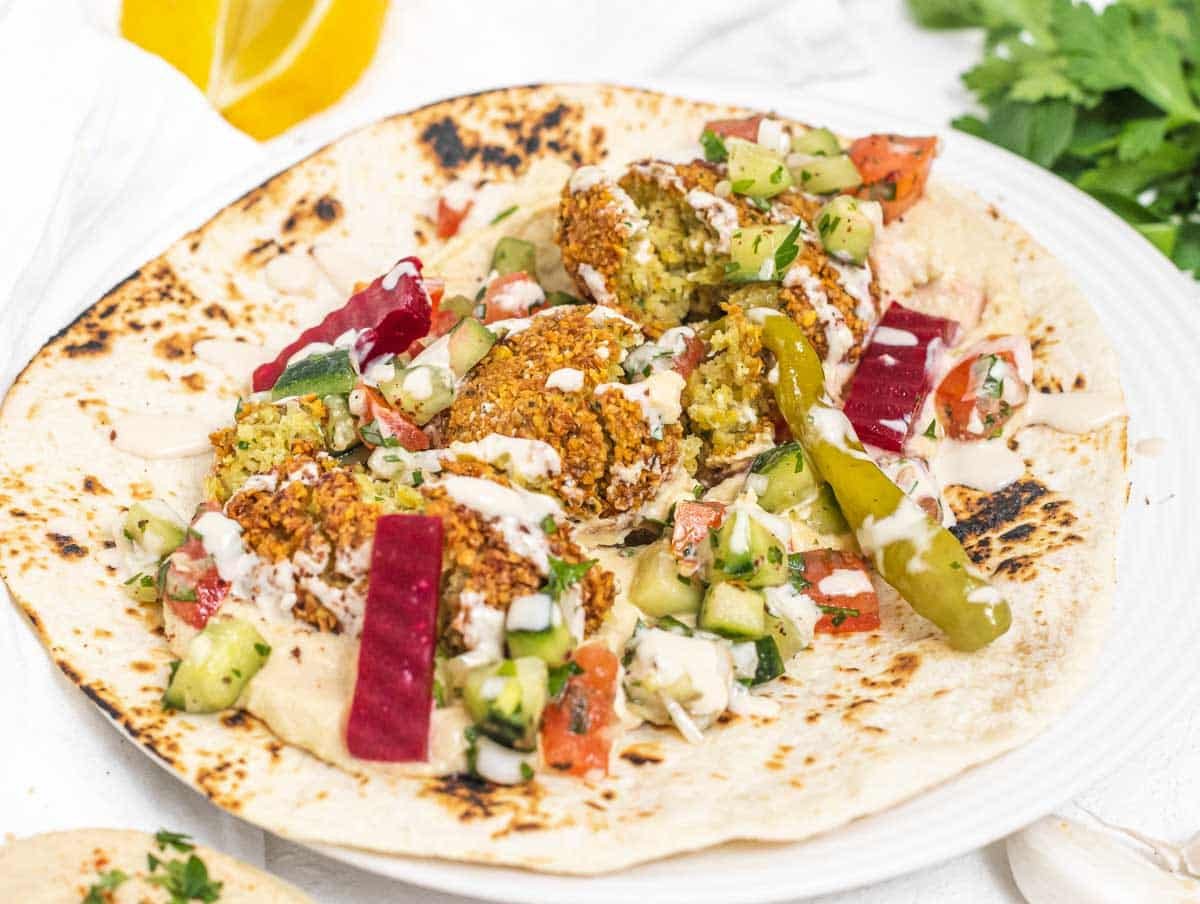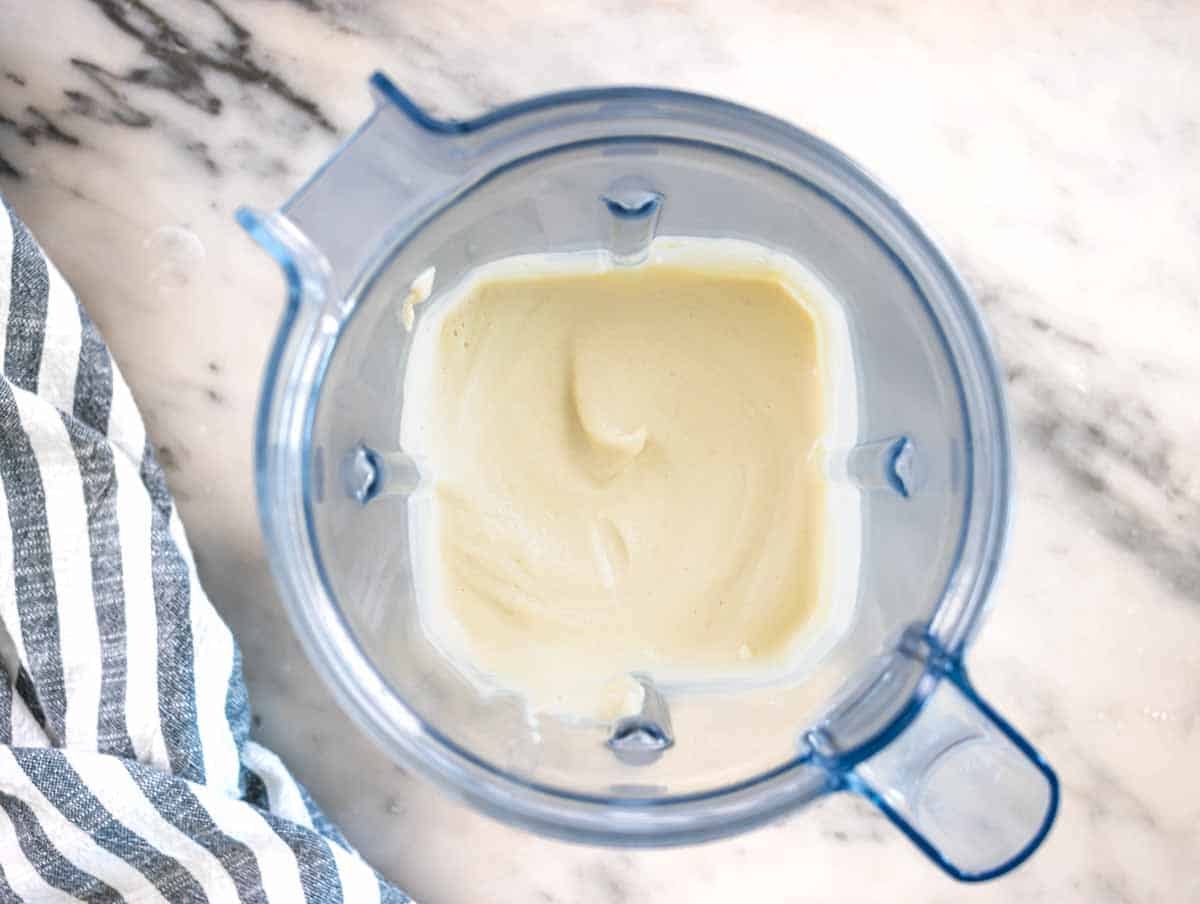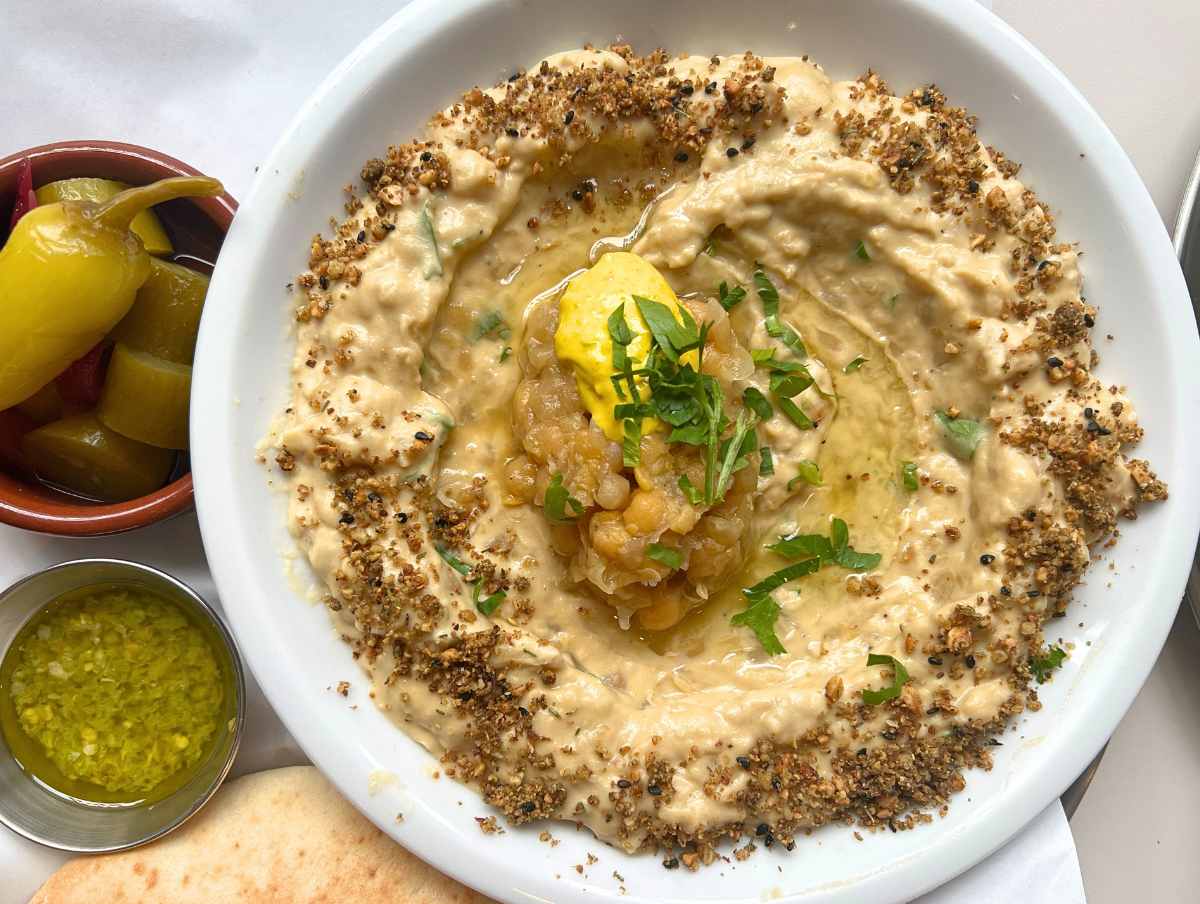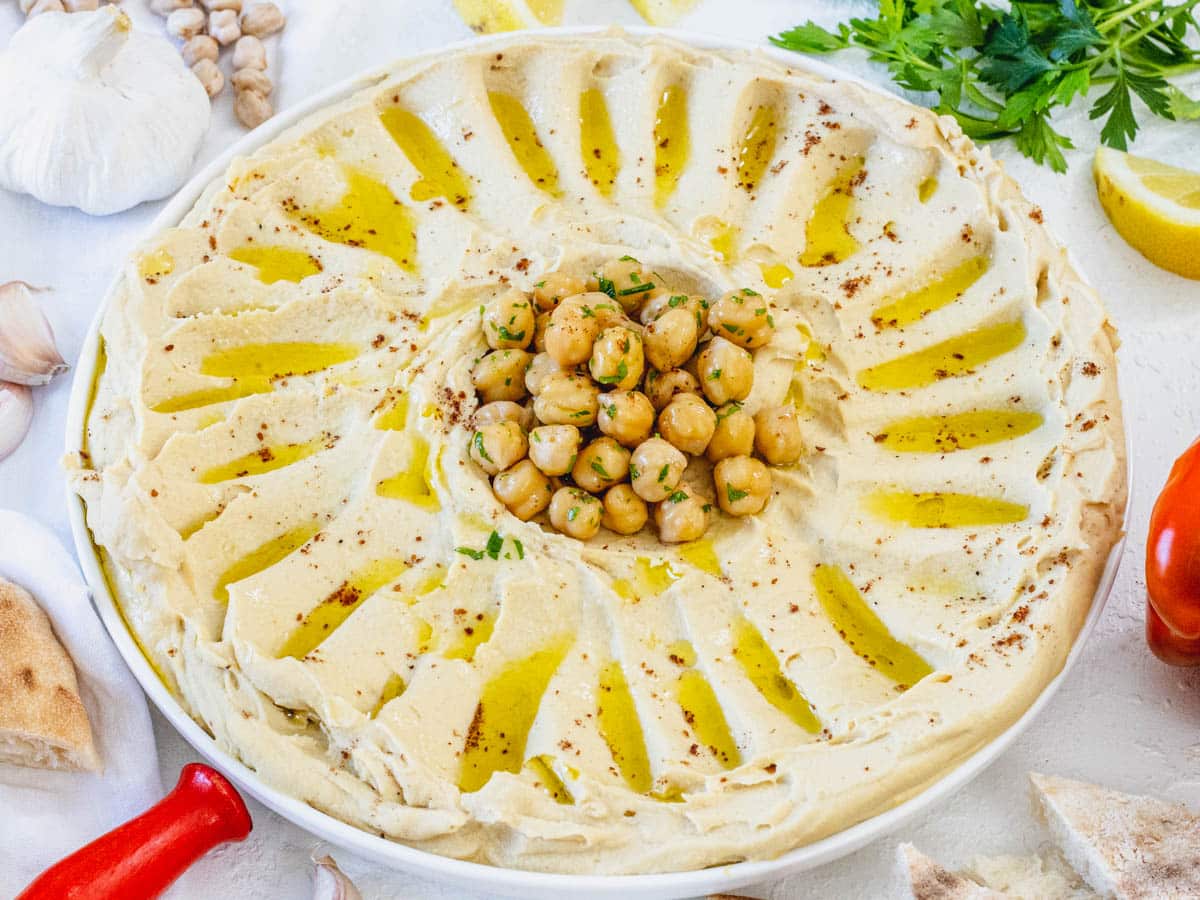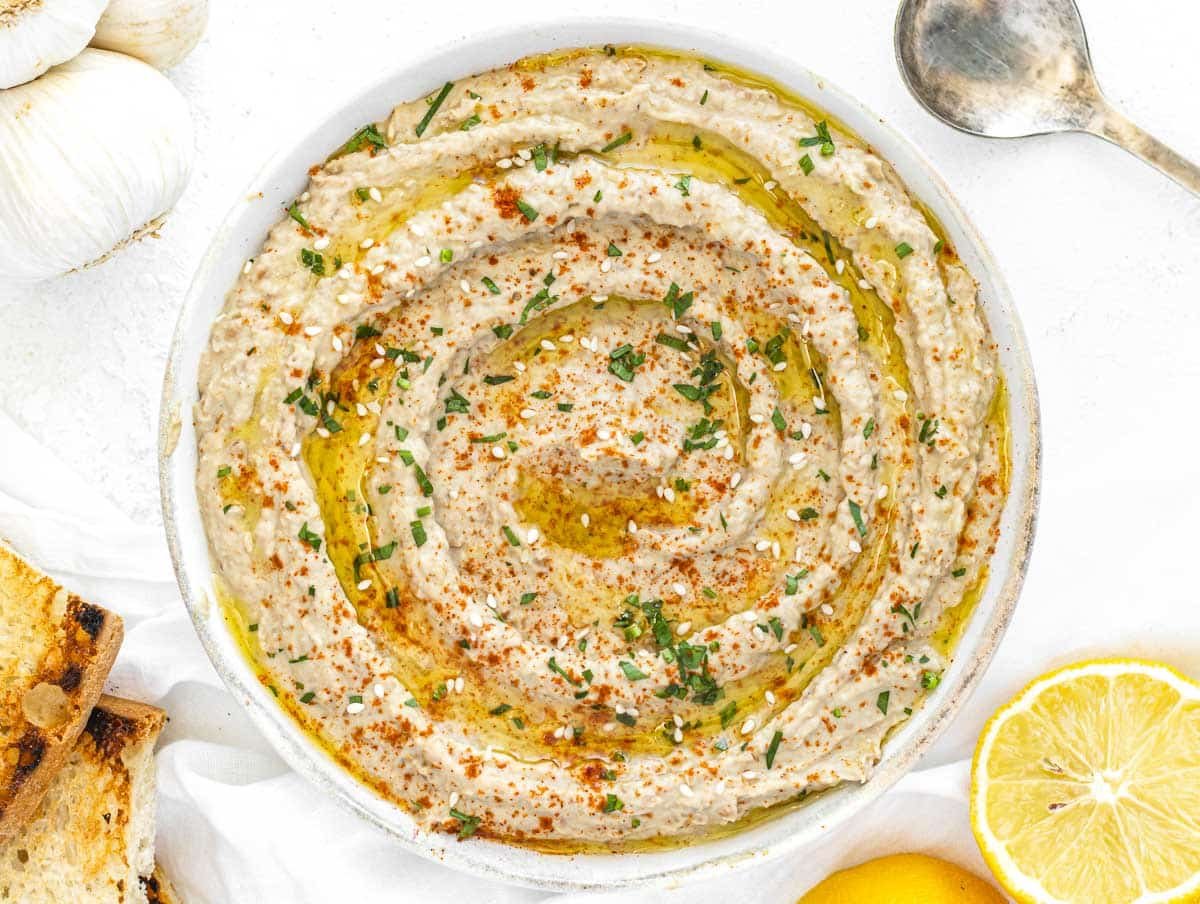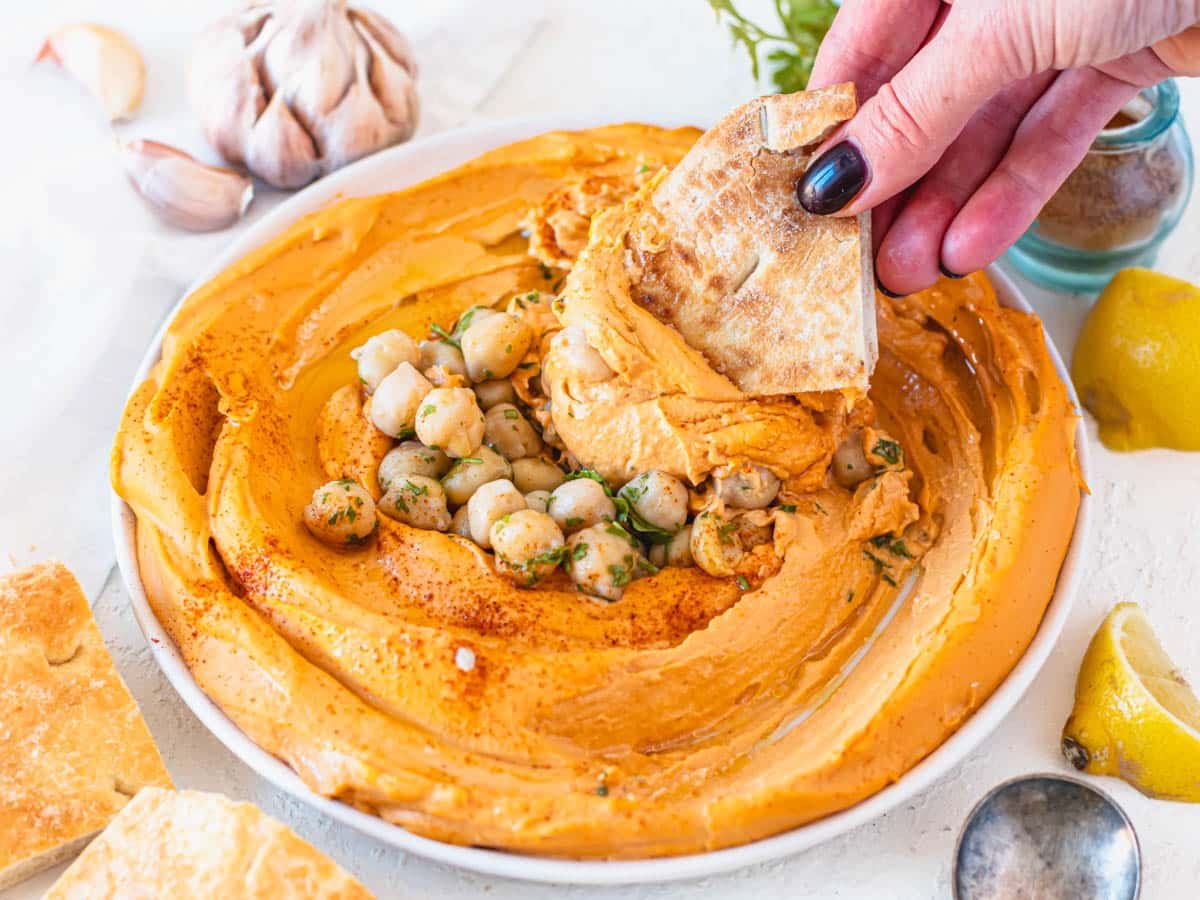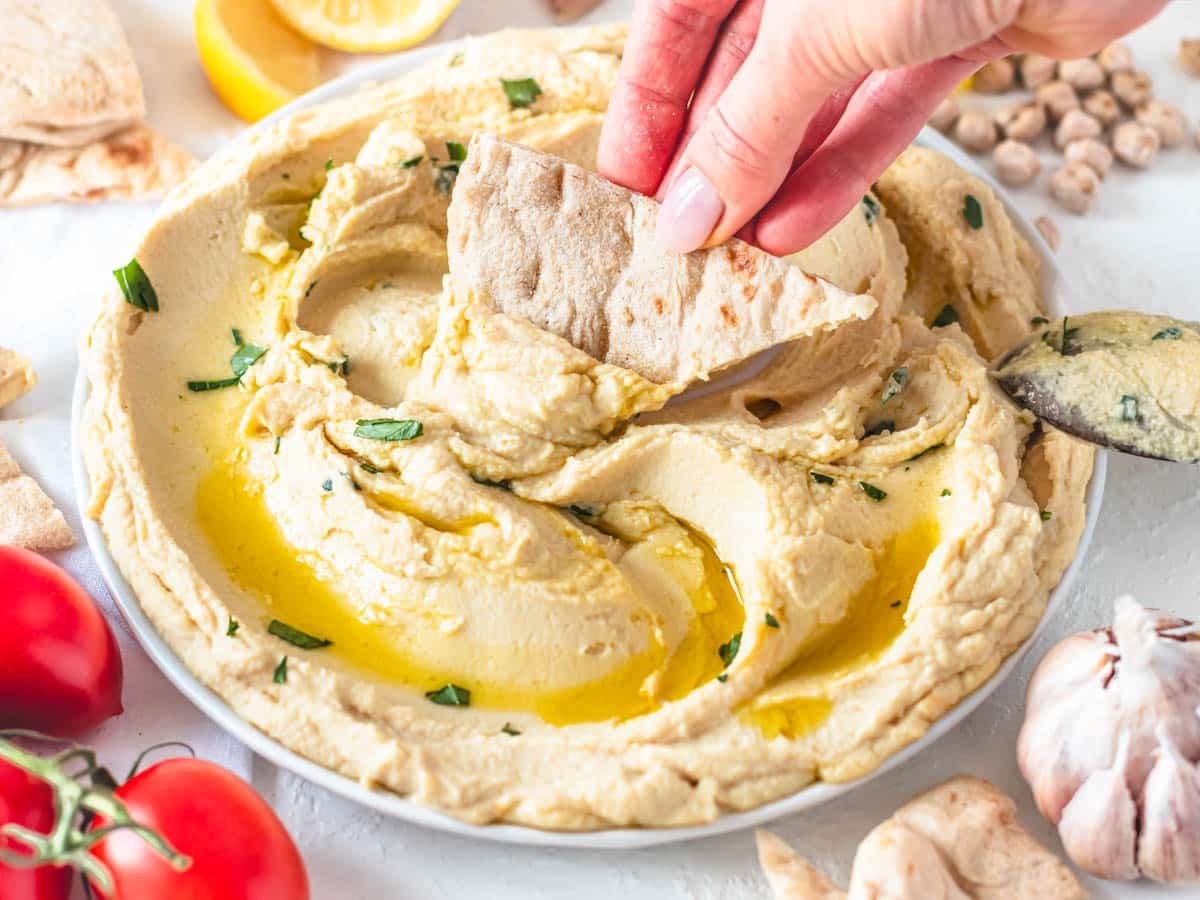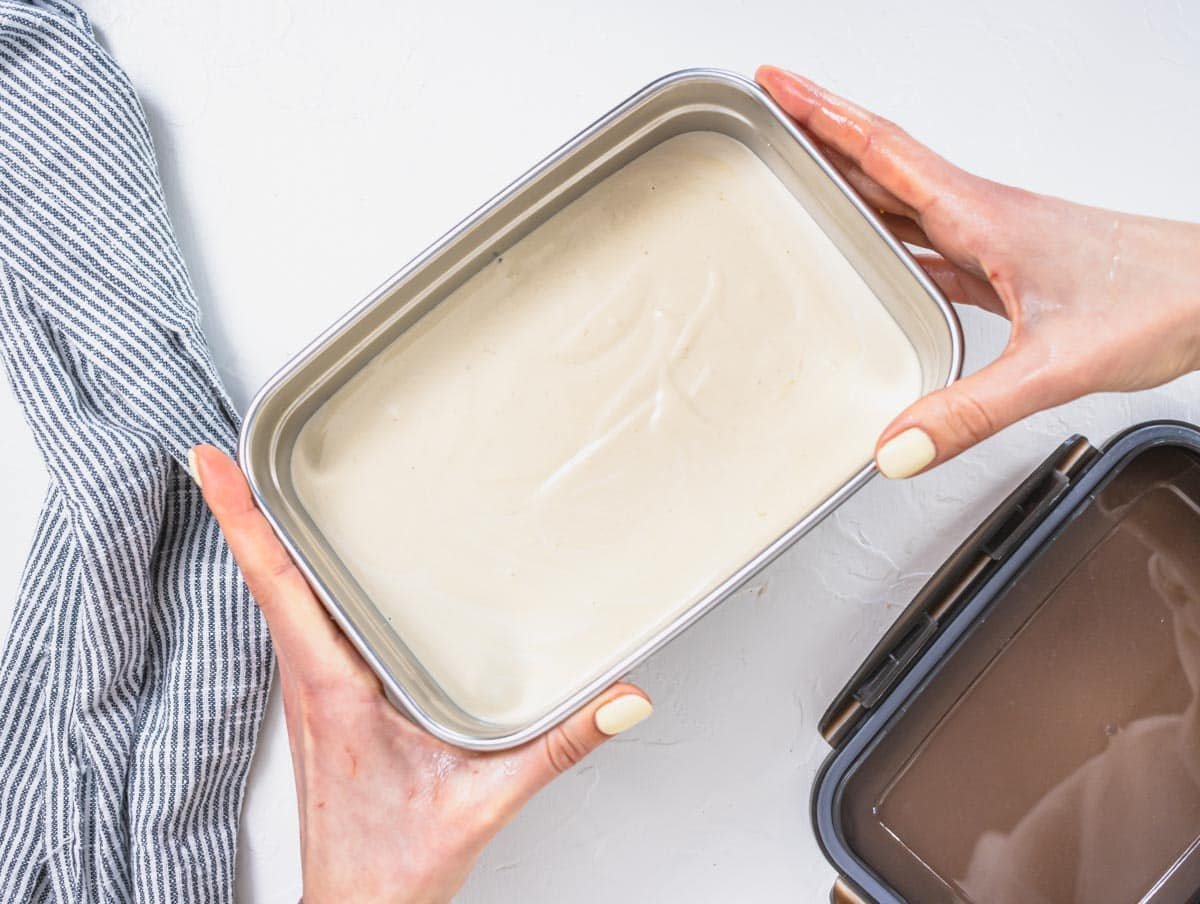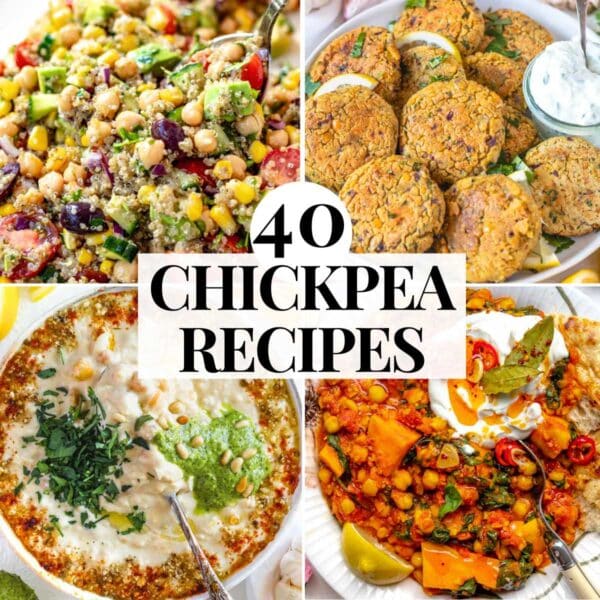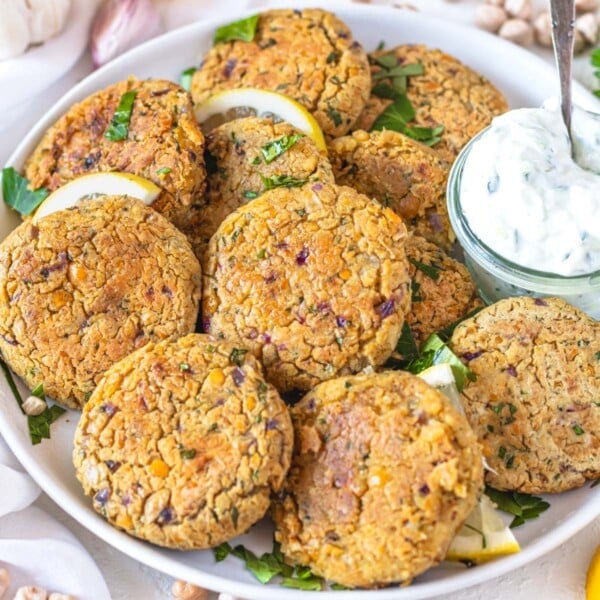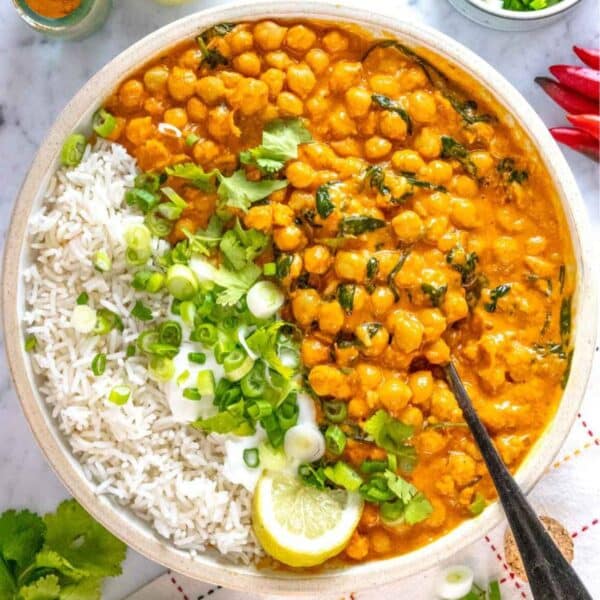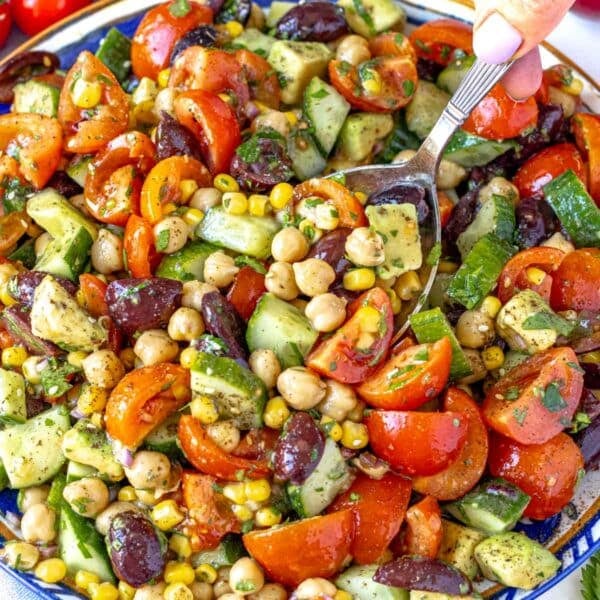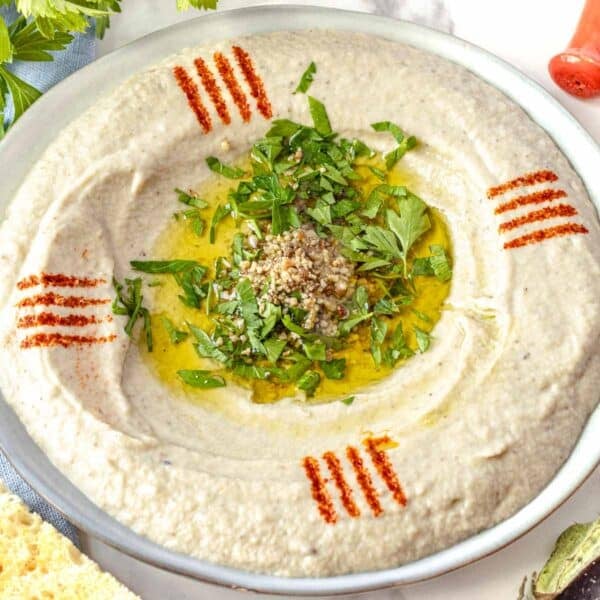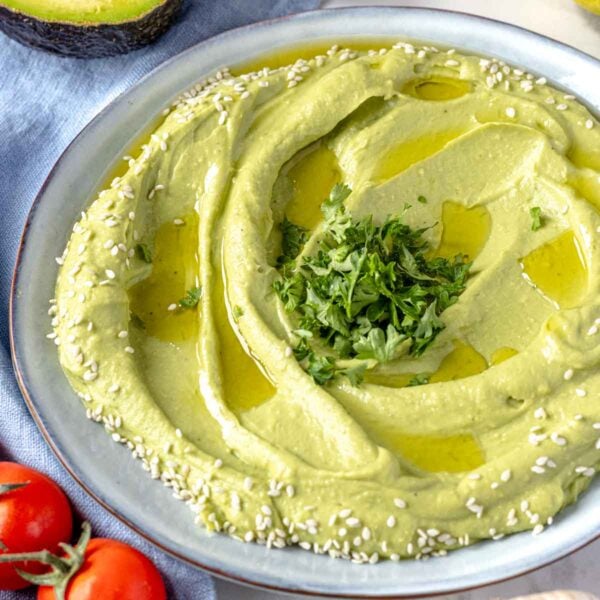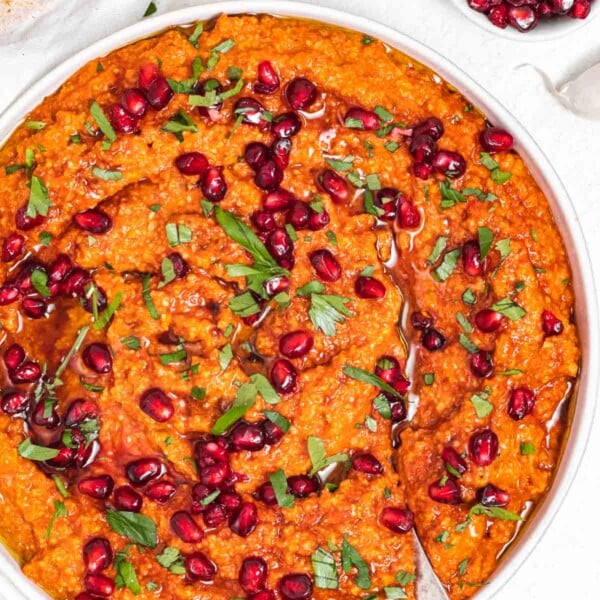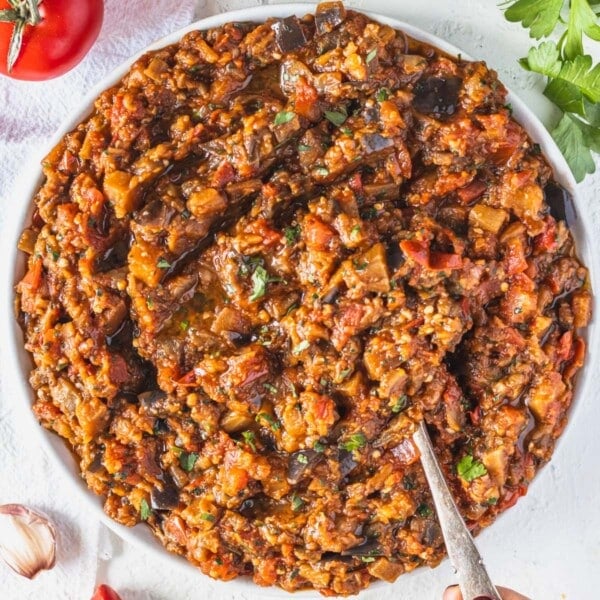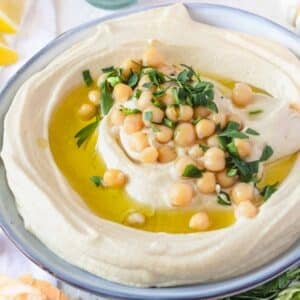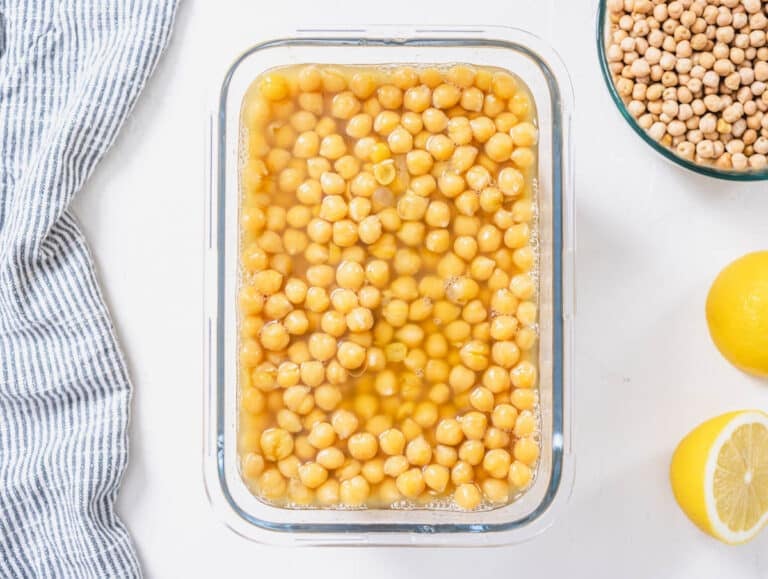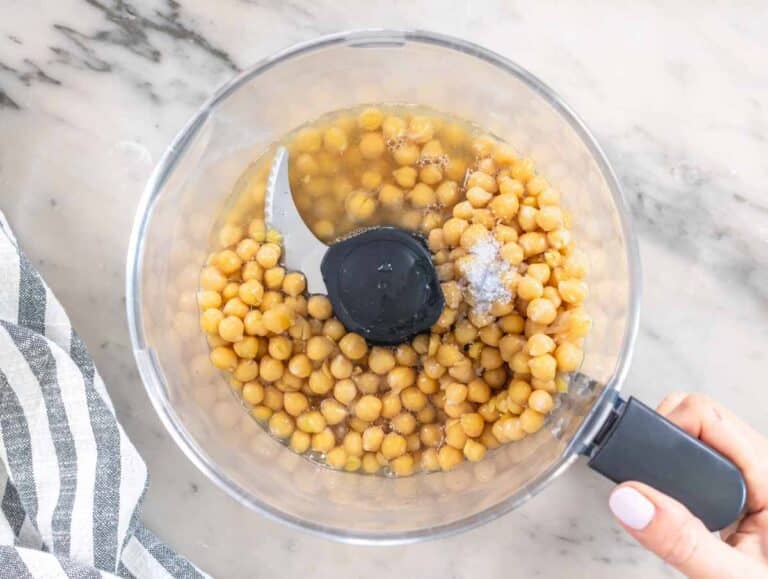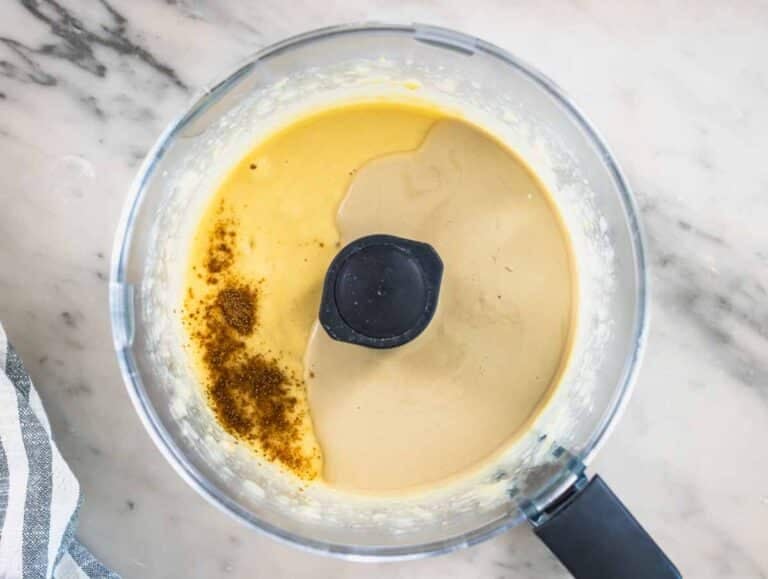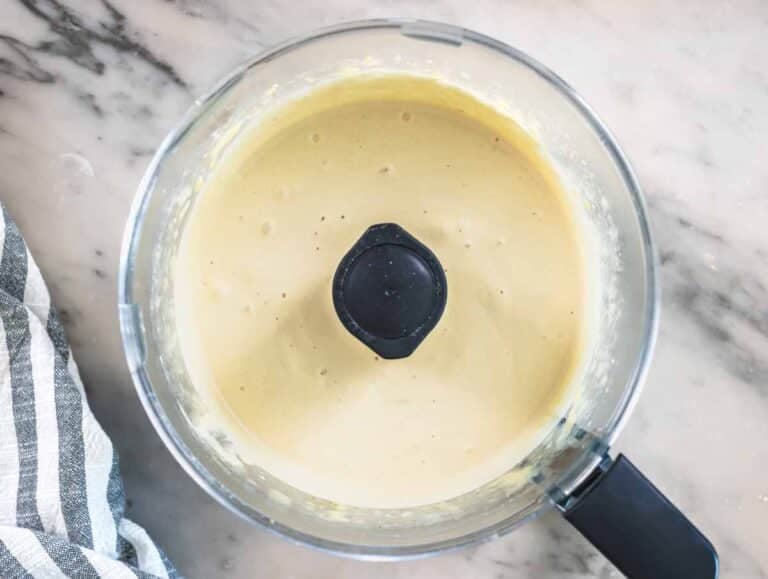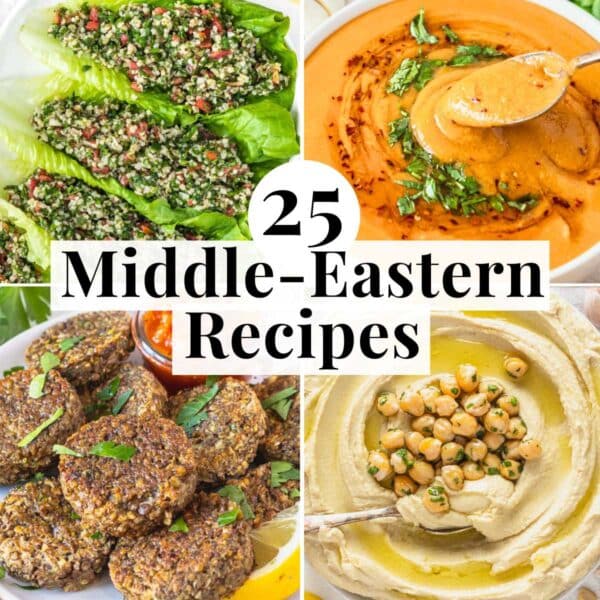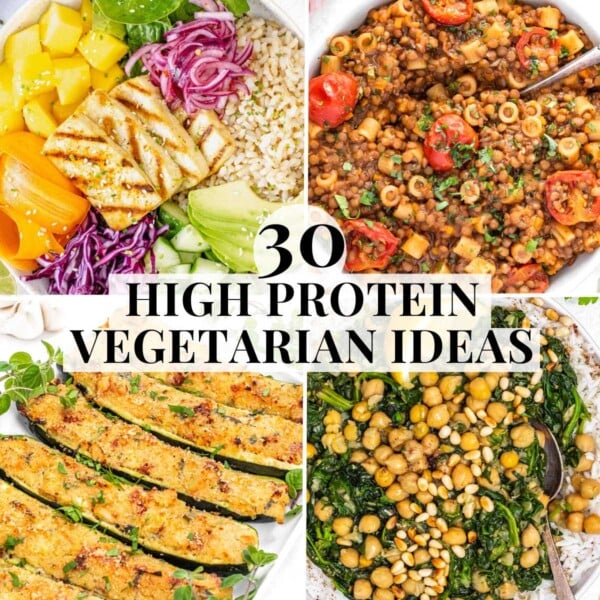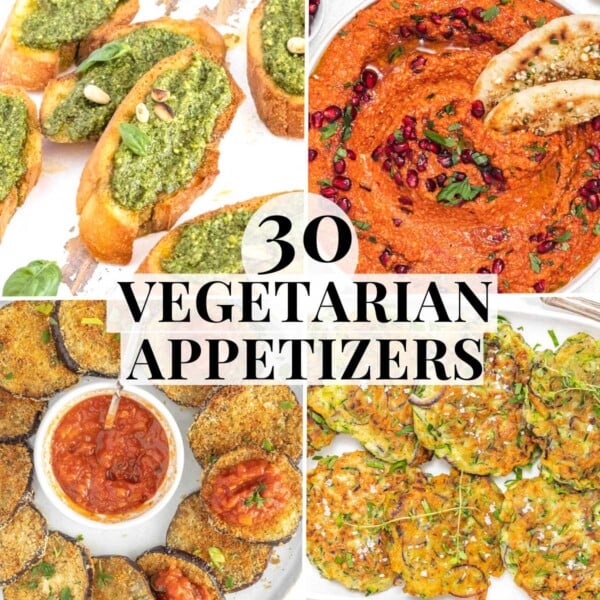Making an excellent hummus requires the knowledge of a few simple tips and secrets that we’ll share with you in a second. This recipe is the result of hundreds of tests, knowledge sharing, and conversations with some of the best hummus makers in the world. Enjoy it!
What is hummus?
Ingredients and substitutions for hummus
How to make the best hummus
Questions
Serving Suggestions
As a base for roasted veggies
Variations
Storage & Make Ahead
More Chickpea Recipes
More Dips and Spreads
It’s nutritious and packed with protein, healthy fats, good carbs, fiber, and minerals. It makes an excellent meal with pita bread. Traditionally, the Arabs eat it for breakfast, but it’s also perfect for lunch or dinner. And you can even use it as a spread to make a delicious hummus sandwich! While making hummus is easy – after all, you can make it with a few ingredients in 10 minutes – online recipes rarely reveal all the tips and secrets to make a truly excellent hummus. With this blog post, we are hoping to change that. Remember that there isn’t one right recipe, but countless variations based on tradition, culture, and many other factors. This is our best hummus recipe, the result of hundreds of tests, knowledge sharing, book research, travels to the best hummus restaurants, and conversations with some of the best Lebanese, Palestinian, and Israeli hummus makers in the world. We hope you enjoy it.
Chickpeas/garbanzo beans
You can use dry chickpeas or canned chickpeas. Tips for using dry chickpeas
Use the smallest dry chickpeas you can find. This makes a huge difference! Soak them for 24 hours in plenty of water. Cook them until very tender in water and baking soda. Reserve the cooking liquid (aquafaba). They should be slightly overcooked, almost falling apart. A pressure cooker or instant pot is excellent for cooking chickpeas for hummus. Here is our guide on how to cook chickpeas for your reference. Refrigerate the cooked chickpeas in their cooking liquid in an airtight container. It’s best if they are cold when you use them to make the hummus.
Tips for using canned chickpeas
Cold is your friend! Put the cans in the fridge a day in advance. Some canned chickpeas are stone-hard. If that’s the case, transfer them to a saucepan with their canning liquid and boil them for 15 minutes. Put in the fridge, with their liquid, to cool down before use.
Chickpea liquid or aquafaba
Aquafaba is the water left over after cooking the chickpeas or the liquid in a can of chickpeas. It makes the creamiest, tastiest, and most airy hummus. Best if used fridge-cold.
Tahini
Use tahini from 100% hulled sesame seeds, ideally imported from Eastern Mediterranean countries. Tahini should be light in color and have a pourable consistency. Avoid thick, pasty, and dark tahini because it’s not authentic and is often bitter.
Extra virgin olive oil
A small amount of olive oil goes in the hummus; the rest is for garnishing. Pick a good quality oil as you will taste its flavor.
Lemon juice or citric acid
Some of the best chefs use citric acid because it keeps the spread fresh for longer. If you make hummus at home, fresh lemon juice is perfectly fine.
Salt
Use sea salt or kosher salt. Add more or less depending on your taste and dietary preference.
Cumin
Ground cumin is optional. You can add a bit, but remember that hummus is about chickpeas, not cumin.
Garlic
Fresh garlic is optional. If you add it, start with half a clove. The garlic flavor becomes stronger as you store the hummus in the fridge.
Cold or iced water
If you are making hummus in advance and plan on serving it hours later, you can make it a little runnier by adding some more cold water, as it will thicken in the fridge.
Flat-leaf parsley
Italian parsley, or flat-leaf parsley, is used to top the hummus. This recipe is for a food processor. To make hummus in a blender, see the “variations” chapter below. Set aside two tablespoons of chickpeas for garnishing. To a food processor, add cold cooked chickpeas, cold chickpea liquid or aquafaba, lemon juice, garlic (if using), and salt. Tip: Here’s our guide on how to cook chickpeas for your reference. Blend for 3 minutes. Add tahini, cumin, and half the water. Blend for 2 minutes. Add extra virgin olive oil and the remaining water, if necessary. Blend for 2 more minutes. Then taste and adjust for salt and, if necessary, add a little more water to reach your desired consistency. Spread the hummus on a plate or in a bowl and make space in the center with the back of a spoon. Top with extra virgin olive oil, cooked chickpeas, and fresh flat-leaf parsley. Serve with warm pita bread.
Refrigerate your ingredients a day in advance, if possible. Add and process the ingredients gradually, as we show you, using a timer. For the smoothest spread, use the smallest chickpeas cooked until they are very tender, almost falling apart.
Equipment tips
We recommend making hummus in a food processor because a high-speed blender tends to heat up the ingredients and change the flavor of the hummus. If you must use a blender, add 5 icecubes to keep things cool. Add all ingredients at the same time, and blend for 2 – 3 minutes.
Chickpea tips
Use the smallest dry chickpeas for the best flavor and texture. Boil them in water and baking soda. Overcook them slightly; they need to be very tender. Refrigerate the chickpeas and their cooking liquid before use. Use chickpea cooking liquid or aquafaba. If your chickpeas are big, you might consider removing some of their skins. If using canned chickpeas, we recommend putting the can in the fridge the day before.
Aquafaba tips
Aquafaba is the water in which you cook the chickpeas or the liquid in a can of chickpeas. It’s essential when making hummus because it adds flavor and creates a light and airy texture. Aquafaba must be fridge-cold to work its magic.
Tahini tips
Use tahini made from 100% hulled sesame seeds with a light color and pourable consistency. Avoid dark pasty tahini. Refrigerate the tahini. Stir the tahini with a spoon before use.
Extra virgin olive oil
Use a mild extra virgin olive oil; the best you can afford. Adding a small amount of oil improves texture and flavor.
Cumin & Garlic
Remember that hummus should taste like chickpeas and tahini, not cumin or garlic. They are optional. If used, start with small amounts, as their flavor will increase as the spread sits in the fridge.
Water tips
Depending on the type of chickpea you might need more or less water. If you think more is needed, add it gradually until you reach your desired consistency.
If you are wondering what to eat with hummus, we’ve made a list of 25+ ways to eat hummus. Some Ideas are:
On a mezze platter
Make a mezze platter with falafel, fattoush, baba ganoush, tabbouleh, Zaalouk, confit tomatoes, caramelized onions, grilled eggplant, olives, feta, or halloumi.
Hummus sandwich
A delicious snack or quick lunch recipe with hummus and vegetables in two slices of toasted bread. Check out our hummus sandwich recipe.
With falafel
If you like Middle Eastern food, you’ve got to try homemade falafel! They are fragrant, herby, and aromatic, made with wholesome and simple ingredients. They are divine with hummus, tahini sauce, and warm pita bread. Check out our homemade falafel recipe.
As pasta sauce
Creamy hummus makes a delicious pasta sauce. Toss it with rigatoni al dente and sautéed mushrooms. Check out our hummus pasta. Check out our roasted peppers recipe.
In a pita sandwich
Warm up the pita and spread a generous amount of hummus on the bottom. Fill it with grilled or roasted vegetables, falafel, salad leaves, tomatoes, and more. Drizzle with tahini sauce and add a sprinkle of sesame seeds.
In a falafel bowl
You’ll love this Mediterranean bowl with homemade falafel. A couple of spoonfuls of hummus fit right in! Check out our Mediterranean bowl recipe.
In a wrap with falafel
This is how we eat hummus and falafel in Berlin, Germany, where many Lebanese restaurants serve falafel this way. Warm up a large wrap, spread a generous amount of hummus on the base, then top with smashed falafel, Shirazi salad, jalapeños, pickled beets, fresh parsley, fresh mint, squeezed lemon, and a good drizzle of tahini sauce. Enjoy!
Loaded hummus platter (fatteh)
This is our interpretation of Fatteh, a delicious Lebanese dish with crunchy pita bread, chickpeas, yogurt tahini sauce, and more. Check out our fatteh recipe. However, due to the speed of the blades, the ingredients can heat up, affecting the flavor and consistency of the hummus and making it less airy and more compact. To avoid this, we recommend starting with very cold ingredients. Then, add 5 ice cubes and the rest of the ingredients all at once to the blender and blend for 1 to 2 minutes or until you reach your desired consistency. Making hummus in a blender might also require a little more water than in a food processor. Be ready to add some.
Masabacha
Masabacha or swimming chickpeas is a simple and delicious recipe similar to hummus but with mashed chickpeas instead of blended. Check out our Masabacha recipe.
Hummus with roasted eggplant
Add the flesh of one roasted or air-fried eggplant to the hummus to give it a mild roasted eggplant flavor. Remember that eggplant is water-rich, so you’ll need less water in the hummus.
Lentil hummus
Lentil hummus is the perfect last-minute appetizer or light meal. It’s ready in 5 minutes, made with canned brown lentils, and the preparation is similar to chickpea hummus.
Red Pepper Hummus
Add roasted and peeled bell peppers to the hummus to give it the delicious sweet and smokey taste of the bell pepper. Check out our roasted pepper hummus to learn how.
Hummus without tahini
If you run out of tahini, here’s the recipe for you. A delicious hummus without tahini. Check it out. Refrigerator: Store in an airtight container in the fridge for up to 1 week. If possible, remove it from the fridge 30 minutes before serving and stir well. Freezer: we don’t recommend freezing this recipe.
40 Chickpea Recipes (easy meals)
Chickpea Fritters
Chickpea Curry
Chickpea Salad
Baba Ganoush Recipe
Avocado Spread
Muhammara
Zaalouk (Moroccan Eggplant Dip)
25 Middle-Eastern Recipes
30 High Protein Vegetarian Meals
45 Easy Vegetarian Dinner Recipes
30 Vegetarian Appetizers
